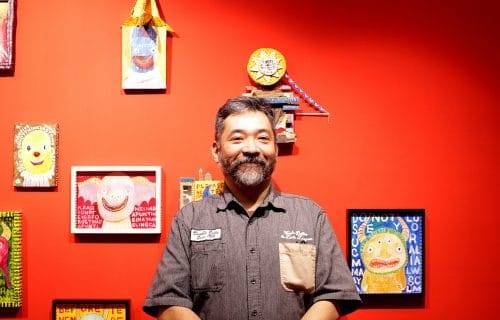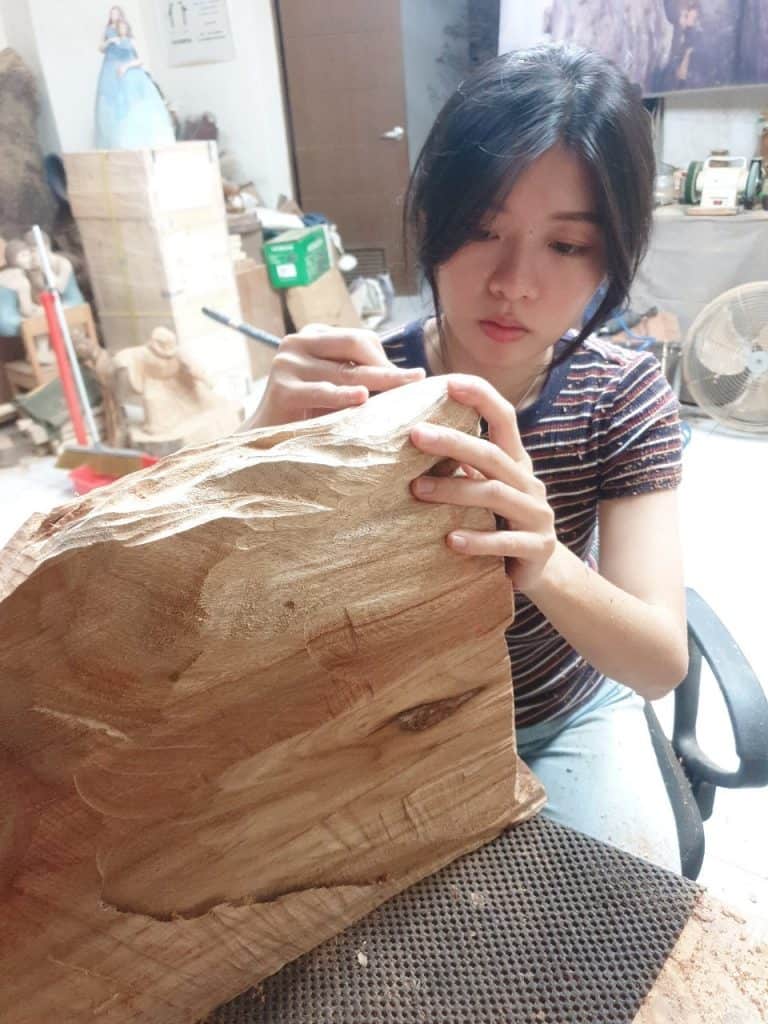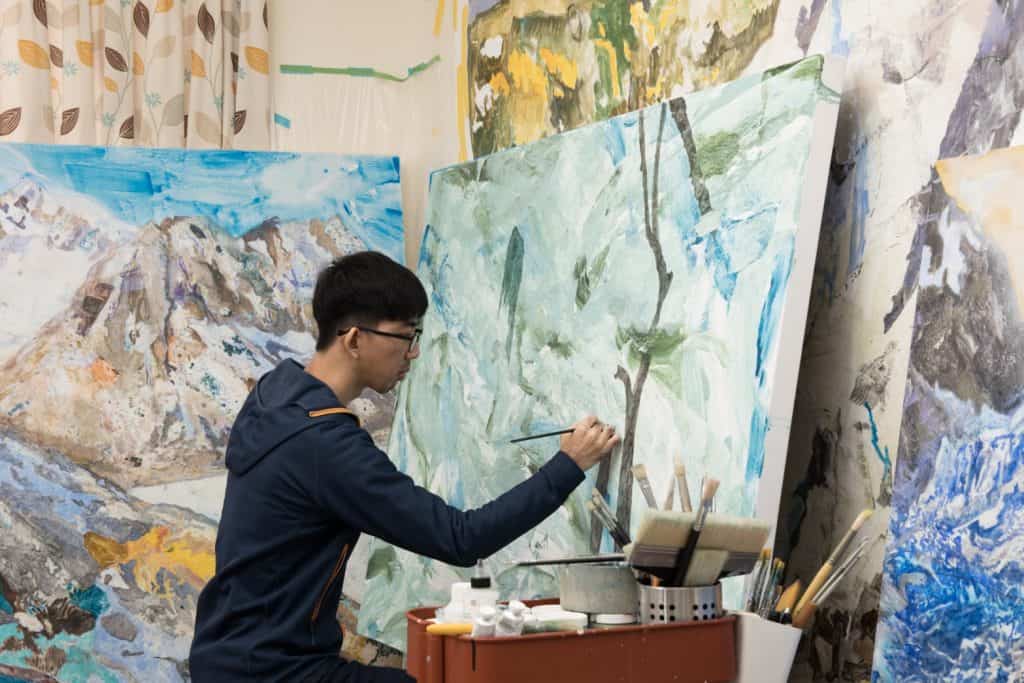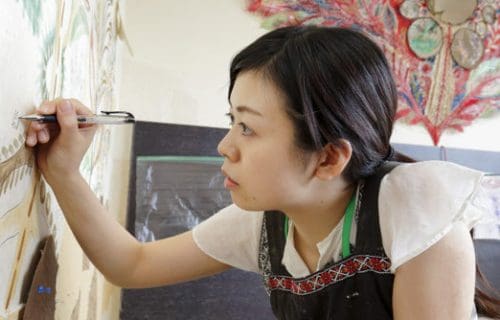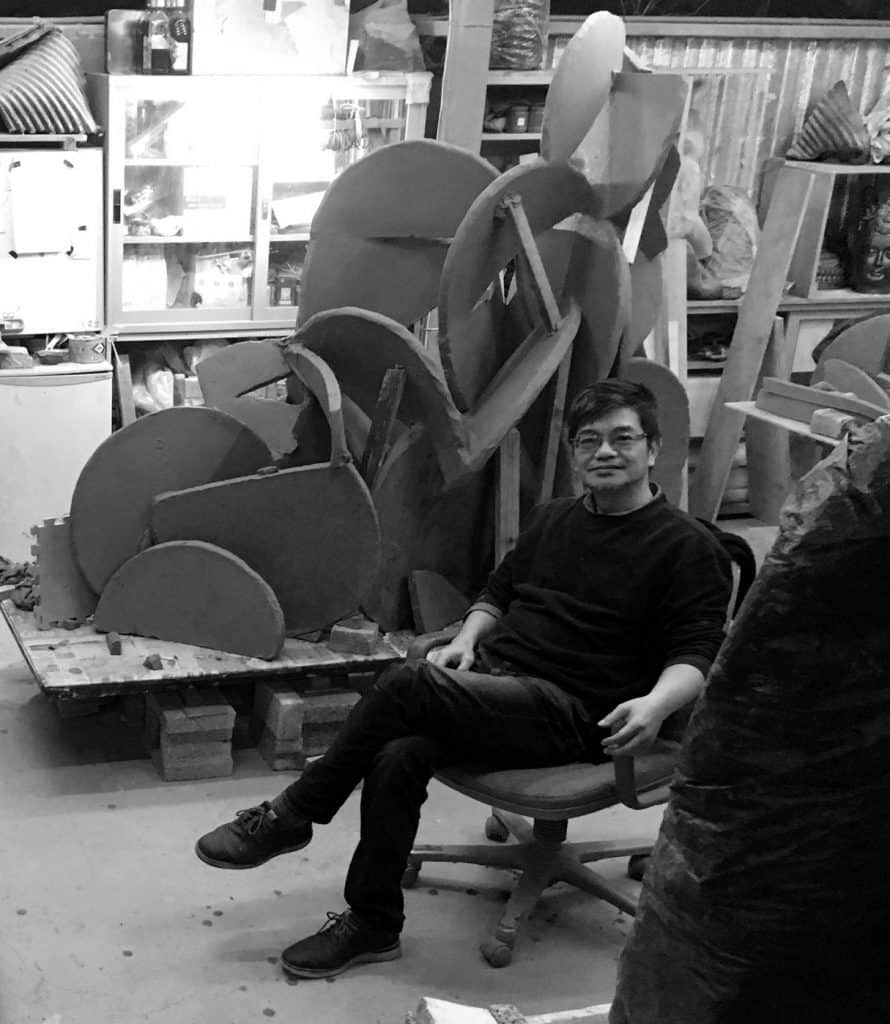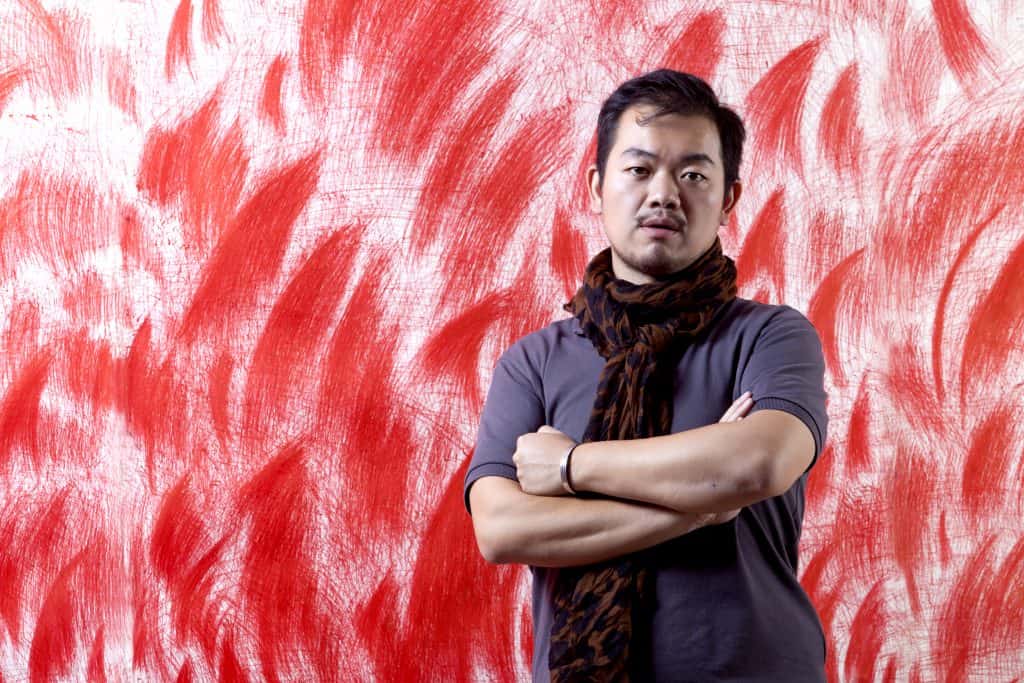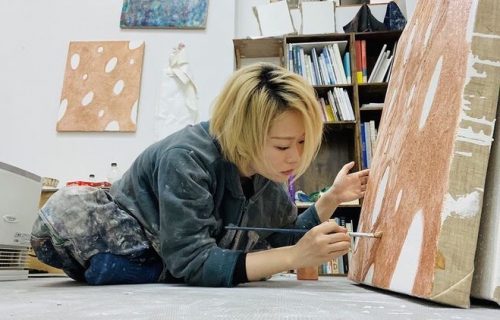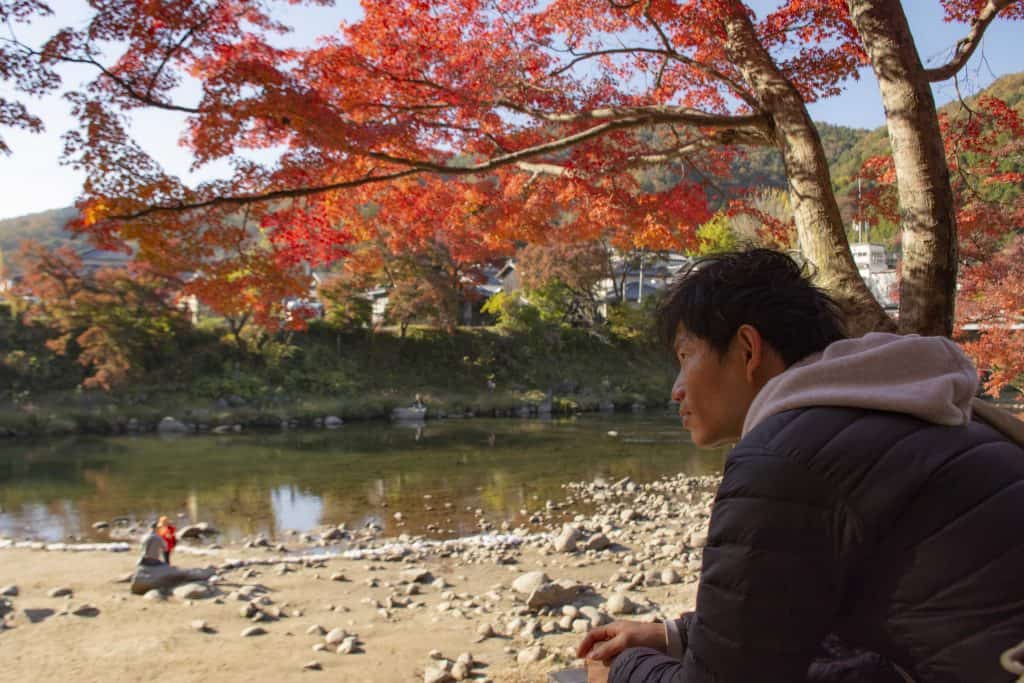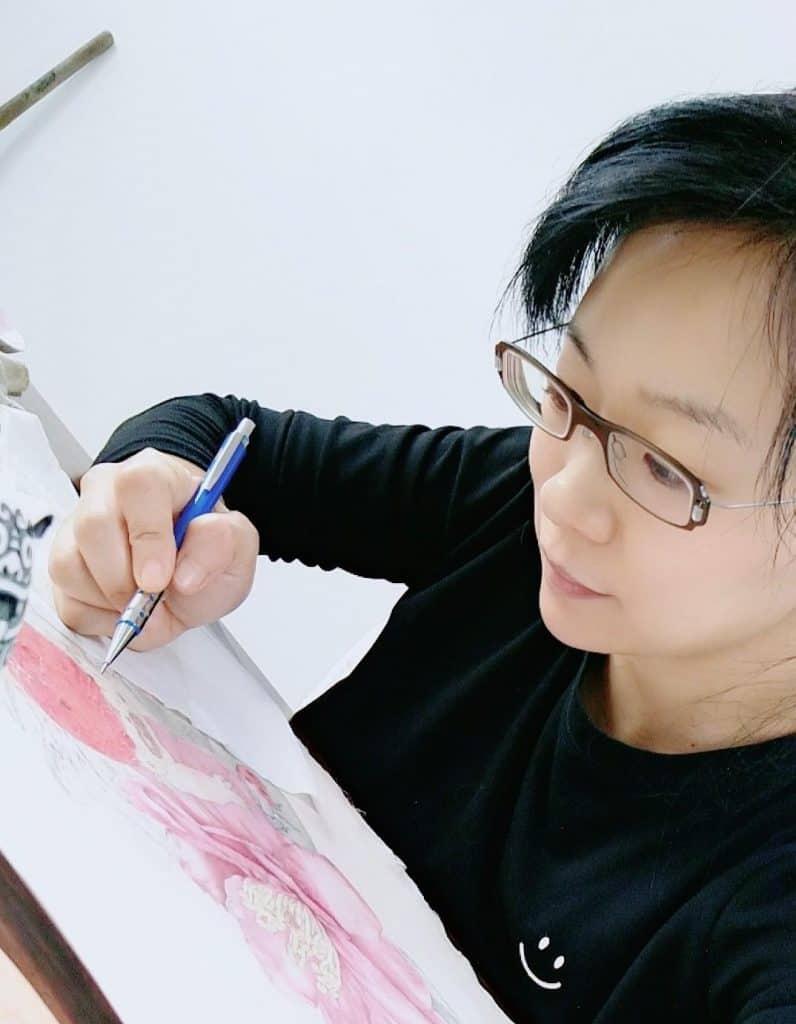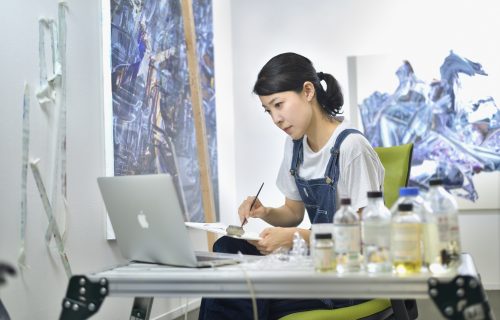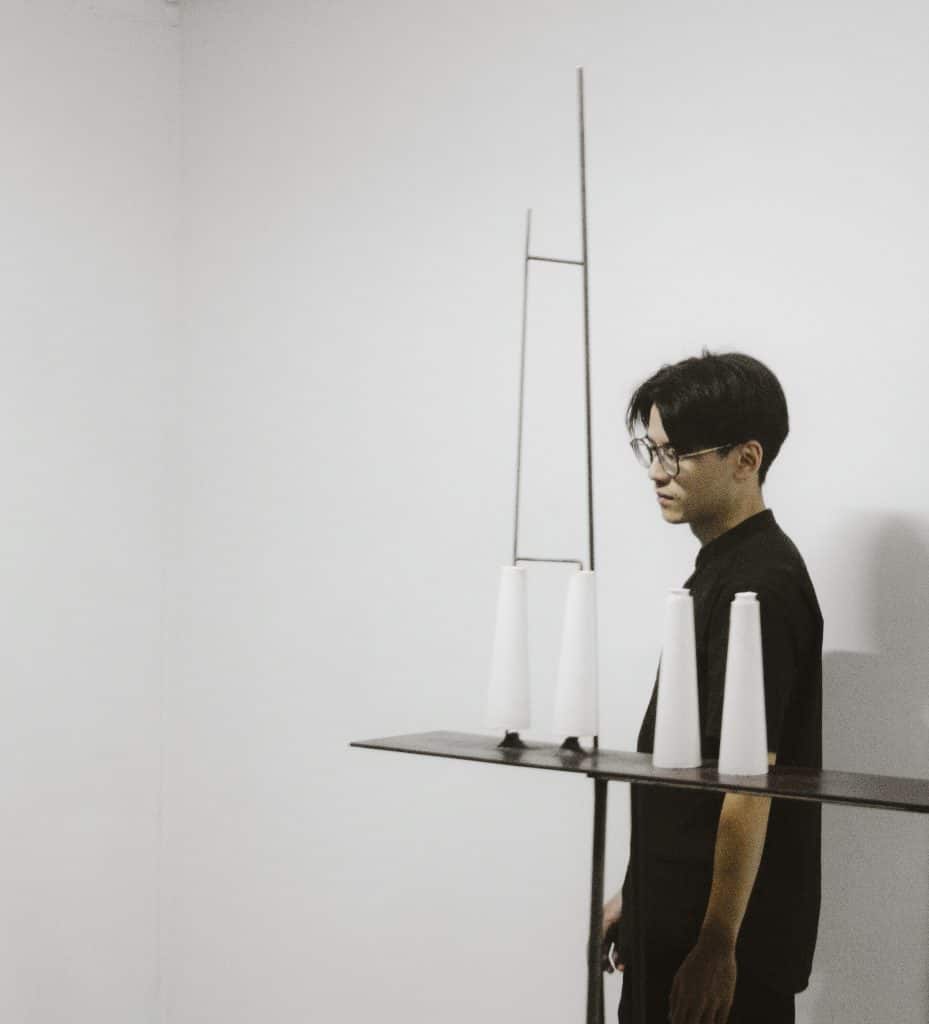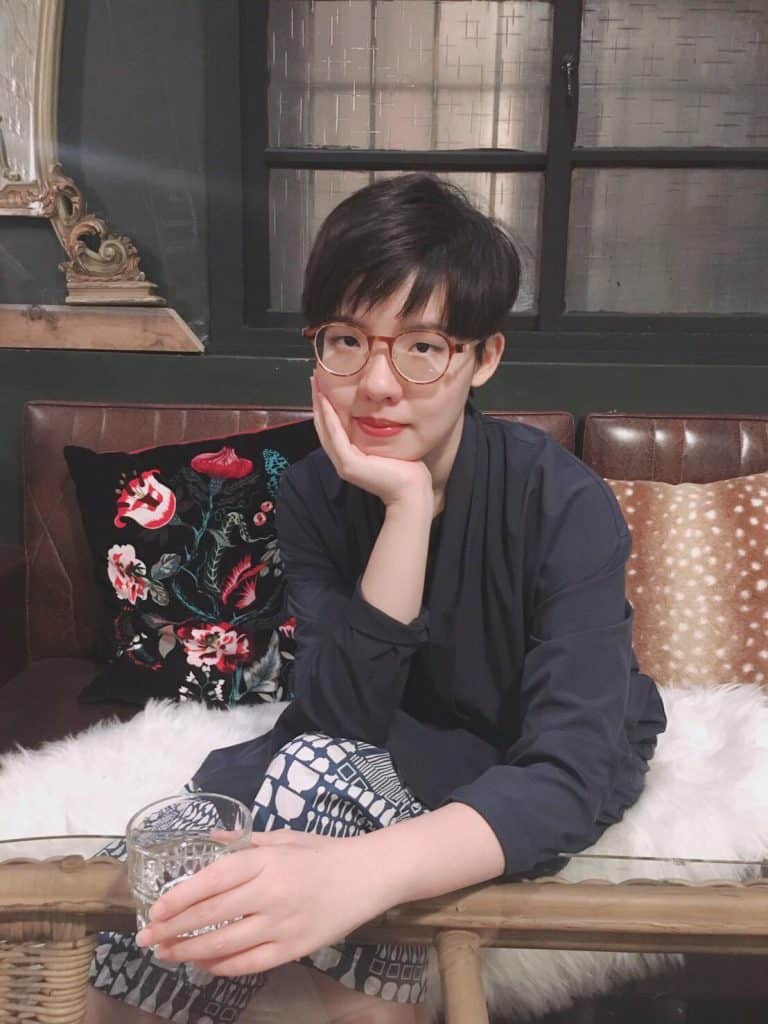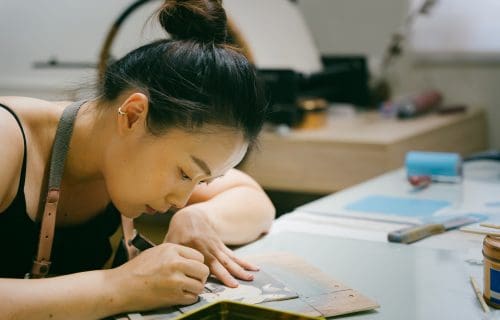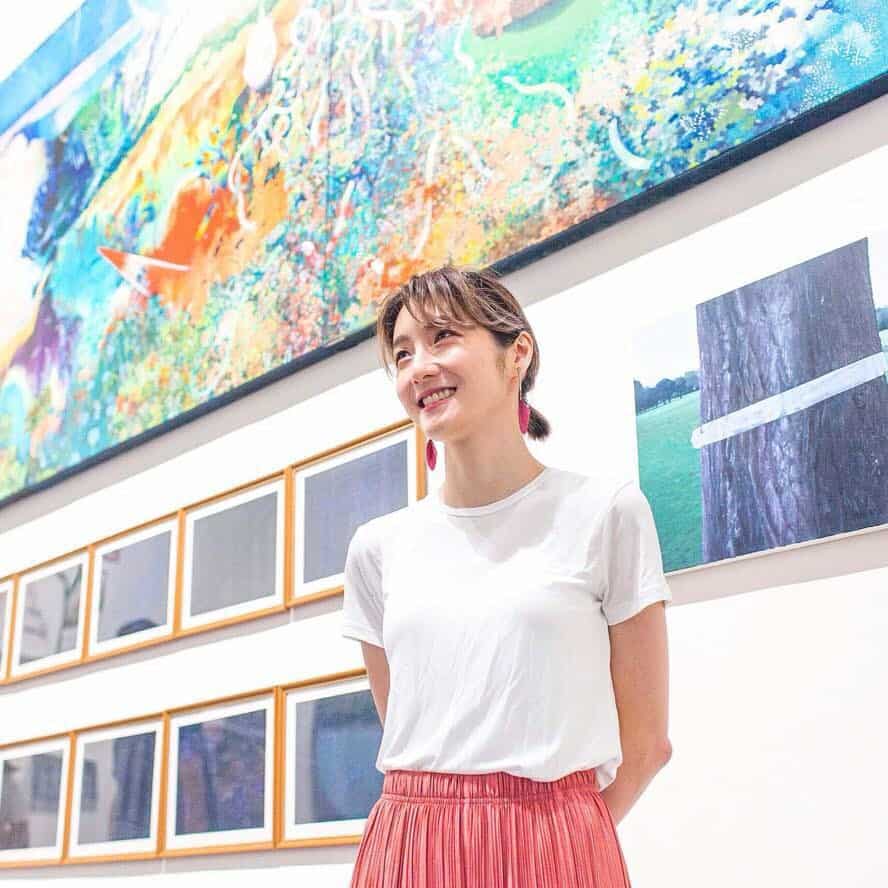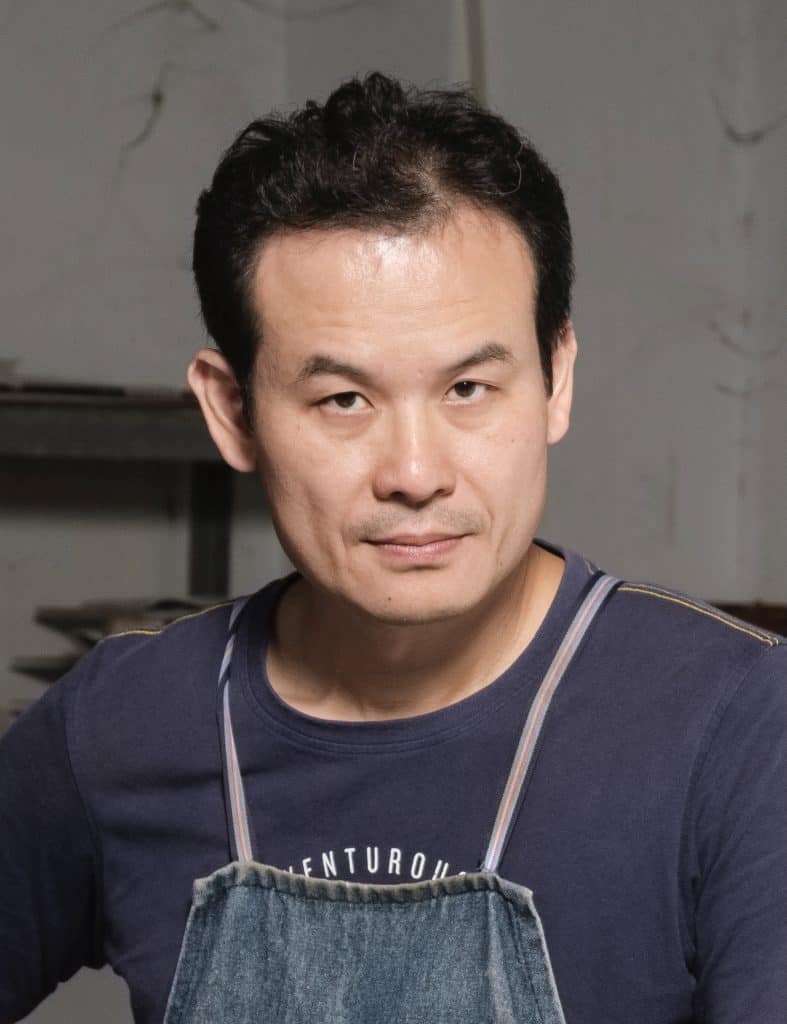文|沈裕昌
「前三三,後三三」是著名的禪門公案,最早典出《汾陽無德禪師語錄》,記載唐代無著禪師北謁五臺山,遇老者的對話。老者先問禪師,南方寺院怎麼住持?院中多少人?禪師回答,寺院僧眾很少奉行戒律,人數大概三五百吧。禪師反問,這間寺院怎麼住持?院中多少人?老者回答,「凡聖同居,龍蛇混雜」,人數則是「前三三,後三三。」
今天,我們初訪弎畫廊,想問的或許是:這間畫廊展些什麼?藝術家多少人?弎畫廊的回答,則與五臺山的老者相同:「前三三,後三三。」答非所問,只因所問非第一義,故飛掠其所問,而徑作第一義之答覆。但如何識得第一義?羅蘭.巴特在《符號帝國》中說得很好:免除對意義的侵佔。能識此義,則所問亦非不可答:「前三三,後三三」邀請了十五位藝術家,一同展出臺灣和日本視覺藝術的當下面貌。
曾雍甯以繽紛的線條在紙上填滿迷離的色塊,從中心逐漸向八方擴散,將書寫性的線性時間,膨脹為生成性的宇宙時間。高雅婷運用複寫紙轉印其謄寫影像與圖像的筆跡,將風景與山水混融成時空密度落差巨大的夢境影像式跳接地景。徐瑞謙使用如建材般輕韌的線性工業物件,透過案發現場般的縝密佈局,使物件在相互指涉中開啟意義的缺口。曾雍甯、高雅婷、徐瑞謙,皆以各自的手法發送線性訊號,對意識與意義進行偵測。
楊寓寧善用宿墨在敏感的生紙上留下顆粒分明的霧狀質地與稍縱即逝的用筆痕跡,輕透層疊的筆觸仿若沖洗底片的顯影過程。牧田愛把都市景觀中的塑料與金屬零件,重新組裝成類生命組織的物件,以此提出人造與自然的界限問題。邱梁城的雕塑作品讓人想起彎折過的金屬建材或模切後的鑄鐵板料,嘗試用陶土在異化的地貌上搭造敞開的場域。楊寓寧、牧田愛、邱梁城,皆指向媒介外部,使塊面性的物象在差異中產生迴響。
徐凡軒以岩繪具在高知麻紙上描繪海景,粼粼波面上的浪花浮沫交錯著星點燈火,投映出被搖盪變形的天色倒影。許聖泓從自身地景經驗與數位記憶出發,重新組織登山健行拍攝的照片,創造出介於影像資訊與繪畫思維間的辯證風景。蔡宗隆以釉燒的陶土,保留紙張揉皺成團後的硬邊摺痕與鼓脹量體,使滑順的平整表面塌陷或隆升為撓曲的物件。徐凡軒、許聖泓、蔡宗隆,皆關注平面受力後形成的空間與感知的褶皺。
李屏宜在疫情後展開原生土地與自我內在的探索旅程,將木刻版畫與木板並置,創造出具有對話性的鏡像風景。陶羽潔將動物圖像置入當代人日常生活中的消費景觀,在靜謐雅緻的氛圍中,隱含著荒誕迷離的不諧和感。小林萬里子以編、染、織、繡等纖維藝術手法,結合多元材質,描繪各種生命體的形象,藉此體現某種循環的生命觀。李屏宜、陶羽潔、小林萬里子,皆試圖透過其創作,與所處的環境,及環境中的其他生命體展開對話。
三宅信太郎在紙面上創造各種色彩鮮豔、造形可愛且充滿夢幻童趣的人物角色,藉此訴說藝術家的社會觀察。山下宏子持續在和紙上描繪內心的幻想世界,記號性的圖像在薄透的色彩下乘載想像,如暈染般蔓延開來。林禹彤以木材雕刻出各種緊密相連卻又拉扯撕裂的二位一體人物形象,探討愛的可能性及人際間的親密情感關係。三宅信太郎、山下宏子、林禹彤,皆以各自創造出的人物形象,探討自我與人際間的各種分裂。
我們可以從這十五位藝術家的作品中,觀察到臺灣與日本的當代藝術世界在當下共同關注的幾個主題。同樣處理空間的變化與流動,曾雍甯關注擴散,蔡宗隆則關注褶皺。同樣處理風景題材,高雅婷、許聖泓關注的是數位影像與地景經驗如何在記憶中混融,徐凡軒、李屏宜則更關注水面倒影等鏡像風景如何折射出個人的內在意識。楊寓寧此次展出的作品雖以花卉為主,但也試圖用繪畫和影像對話。同樣關注都市經驗中的金屬物件,牧田愛選擇了機械零件,徐瑞謙、邱梁城則更在乎建築材料。小林萬里子、陶羽潔同樣處理動物圖像,但前者思考的是人與環境的關係,後者則回應了動物諷喻畫傳統。山下宏子、林禹彤、三宅信太郎同樣以變形的人物圖像表達傾斜的內在世界,但山下宏子面對的是自我,林禹彤面對的是他人,三宅信太郎面對的是社會。
「前三三,後三三」是「弎畫廊」落成後的首展。畫廊主人蘇三,家中排行老三,於三十三年前投入畫廊產業至今,皆以蘇三之名行世,故在2021年創立畫廊時,便以「弎」為名。蘇三生日,友人請書家題「前三三,後三三」相贈,因緣際會,適為畫廊開幕展題。蘇三認為,臺灣四面環海,充滿著可能性,因此她期待不同世代的藝術創作者共同創造出臺灣當下的藝術面貌,也期許弎畫廊能提供國內外藝術創作者交流與對話的空間,並將不同世代的臺灣藝術,持續推薦給不同世代的臺灣藏家。
Almost the Same Everywhere: The Opening Exhibition of San Gallery
Written by Yu-Chang Shen
“Almost the Same Everywhere (前三三,後三三)” is a very famous koan (dialogue, question) in Chan practice that is first recorded in the Recorded Sayings of Chan Master Fenyang Wude (汾陽無德禪師語錄). This koan was originally the dialogue between Chan Master Wuzhuo, who was a monk in the Tang dynasty visiting Mount Wutai, and an old man. In the dialogue, the old man first asked Chan Master Wuzhuo how were the temples in southern China maintained and how many monks were there in a temple? Chan Master Wuzhuo said that few monks abided by the rules, and there were 300-500 monks in a temple. And then Chan Master Wuzhuo asked the old man how was the temple here maintained and how many monks were there? And the old man said that “saints and common people dwell together, and dragons and snakes intermingled.” The number of monks there was “almost the same as in other temples everywhere.”
Perhaps we would like to ask questions like “What are exhibited in this gallery? From how many artists the works here are?” when we visit San Gallery for the first time today. The answer given by San Gallery is the same as the one given by the old man at Mount Wutai, which is “almost the same as in other galleries everywhere.” It is not answering the question in a specific way because the question is not asking for the absolute truth. Therefore, the original question is omitted, and the reply is the answer to the absolute truth. But how can we know the absolute truth? There is an effective way proposed by Roland Barthes in his book L’Empire des signes: to be free from the possession of meaning. If we know this way, then San Gallery may be able to give us the answer. Fifteen artists are invited to participate in the exhibition “Almost the Same Everywhere” to present the nowadays appearances of the visual arts in Taiwan and Japan with their works.
Yong-Ning Tzeng expands the linear time existing in written works into generative universe time with the use of colorful lines which fill indistinct color lumps from the center to the edges on the paper. Ya-Ting Kao uses carbon paper to print her script which transcribes visions and pictures, merging scenery and landscape painting into jump-cut landscapes like visions in dreams that have huge gaps among different space-time densities. Jui-Chien Hsu takes linear industrial objects which are light and strong like construction materials and designs a delicate layout like a crime scene, making the objects open the crack of meaning in their interactive reference. Yong-Ning Tzeng, Ya-Ting Kao and Jui-Chien Hsu respectively send linear signals in their own ways in the attempt to detect consciousness and meaning.
Yu-Ning Yang is good at leaving a grainy, foggy texture and fleeting strokes on raw Xuan paper which is sensitive with old ink. The lightly, translucent, and layered brushstrokes resemble the development process of developing a negative. Ai Makita takes the plastic and metal components in urban landscape and build objects like vital tissues with them. She suggests the question about the boundary between artificial objects and natural objects. The sculpture works of Liang-Cherng Chiow remind people of bent metal construction materials or die-cut cast iron sheets. Chiow attempts to build open venues on alienated landform using pottery clay. Yu-Ning Yang, Ai Makita and Liang-Cherng Chiow all point to the external side of media, making planar objects resonate in differences.
Fan-Hsuan Hsu depicts ocean scenery on Kochi hemp-paper with mineral pigments. The foams of waves on the surface of the shimmering waves are interspersed with starry lights, reflecting the sky that has been deformed because of swaying waves. Sheng-Hung Shiu starts from his personal landscape experience and digital memories and rearrange the photos shot during mountain hiking, creating the dialectical scene between visual information and painting thoughts. Zung-Lung Tsai adopts glazed pottery clay to keep the hard-edge creases and bulging volume after the paper is crumpled into a ball, making smooth and flat surfaces collapse or rise into bent objects. Fan-Hsuan Hsu, Sheng-Hung Shiu and Zung-Lung Tsai all focus on the space and the sensible folds formed by the plane under the effect of force.
Ping-Yi Li embarks on a journey of discovery of her native land and inner self in the aftermath of the epidemic. She places woodcuts and wood plates together, creating a mirror image scenery with a dialogic nature. Jessica Tao places the images of animals in the consumption landscape of contemporary daily life. In the quiet and elegant atmosphere of her works, there is an implied sense of absurdity and dissonance. Mariko Kobayashi adopts weaving, dyeing, weaving, embroidery, and other fiber art techniques combined with multiple materials to portray various kinds of living beings, which embodies a certain cycle of life. Ping-Yi Li, Jessica Tao and Mariko Kobayashi all attempt to have a conversation with other living beings in the environment through their works.
Shintaro Miyake creates a variety of brightly colored, lovable, and dreamy characters on paper that describe his social observations. Atsuko Yamashita continues to depict her inner fantasy world on washi paper, and her iconic images are spread out like a blur of imagination in thin and translucent colors. Yu-Tung Lin uses woods to carve out a variety of closely interconnected yet torn figures of two people connected to each other, which is to investigate the possibilities of love and the intimate emotional relationships between people. Shintaro Miyake, Atsuko Yamashita and Yu-Tung Lin all try to investigate all kinds of splits between selves and in interpersonal relationships.
We can see some themes commonly focused by the contemporary artists both in Taiwan and Japan form the works of the fifteen artists. In terms of dealing with the change and flow of space, Yong-Ning Tzeng focuses on expansion, and Zung-Lung Tsai focuses on folds. When it comes to scenery, Ya-Ting Kao and Sheng-Hung Shiu focus on how digital images and landscape experiences are mixed in memories. Fan-Hsuan Hsu and Ping-Yi Li focus on how can mirror image scenery like water reflection refract individual inner consciousness. Although the work of Yu-Ning Yang exhibited this time is themed on flower, she still attempts to have a conversation with the vision through painting. About the focus on the metal objects in urban experiences, Ai Makita adopts mechanical components in her work, while Jui-Chien Hsu and Liang-Cherng Chiow care about construction materials more. Both Mariko Kobayashi and Jessica Tao use the images of animals in their works. Kobayashi’s work shows the thinking on the relationship between human beings and environment, while Tao’s work responds to the tradition of satirical drawing. Atsuko Yamashita, Yu-Tung Lin and Shintaro Miyake all uses deformed human images to express inclined inner worlds. However, in this case, Atsuko Yamashita is facing herself, Yu-Tung Lin is facing others, and Shintaro Miyake is facing the society.
“Almost the Same Everywhere” is the opening exhibition of “San Gallery.” Susan, the owner of the gallery, is the third child in her family. Because she has used the name “Susan” since she joined the art gallery industry 33 years ago, she then decided to name the new gallery established in 2021 with the word “San (弎)”. On Susan’s last birthday, one of her friends asked a calligrapher to write a calligraphy work with the characters of “Almost the Same Everywhere (前三三,後三三)” and send it to Susan as the birthday present. Susan thought the sentence fit the situation well, so she used it as the name of the opening exhibition. Taiwan is surrounded by the ocean, and Susan considered that it means Taiwan is full of possibilities. Therefore, she expects that the artists of different generations can work together and create the contemporary appearance of arts in Taiwan. She also hopes that San Gallery can provide the space for domestic and foreign artists to exchange and talk with each other and can recommend Taiwanese art works of different generations to Taiwanese collectors of different generations at the same time.
- All
- 高雅婷
- 陶羽潔
- 楊寓寧
- 曾雍甯
- 許聖泓
- 徐瑞謙
- 徐凡軒
- 邱梁城
- Ai Makita
- 林禹彤
- 李屏宜
- Atsuko Yamashita
- Mariko Kobayashi
- Miyake Shintaro
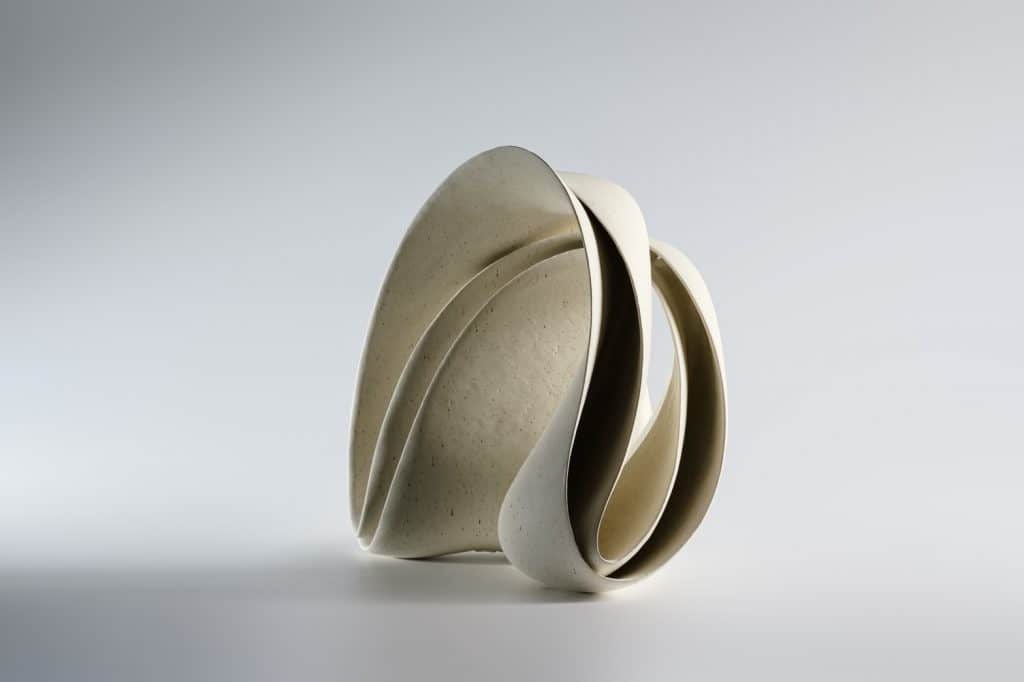
蔡宗隆_向光2105_43x33x39cm_陶_2021
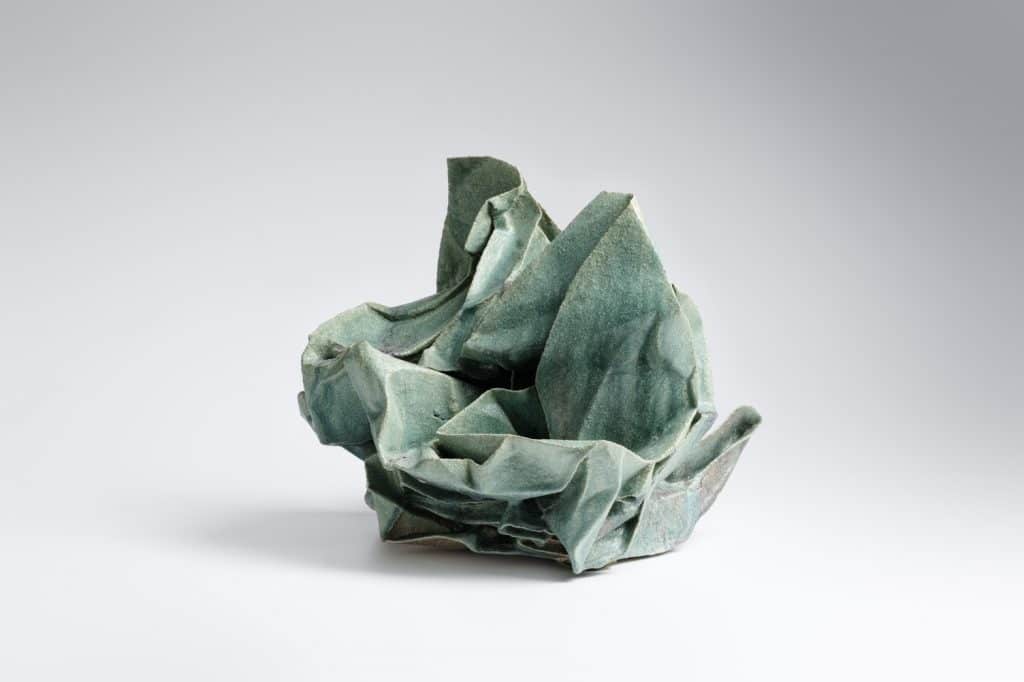
蔡宗隆_風景2201_34x35x32cm_陶_2022
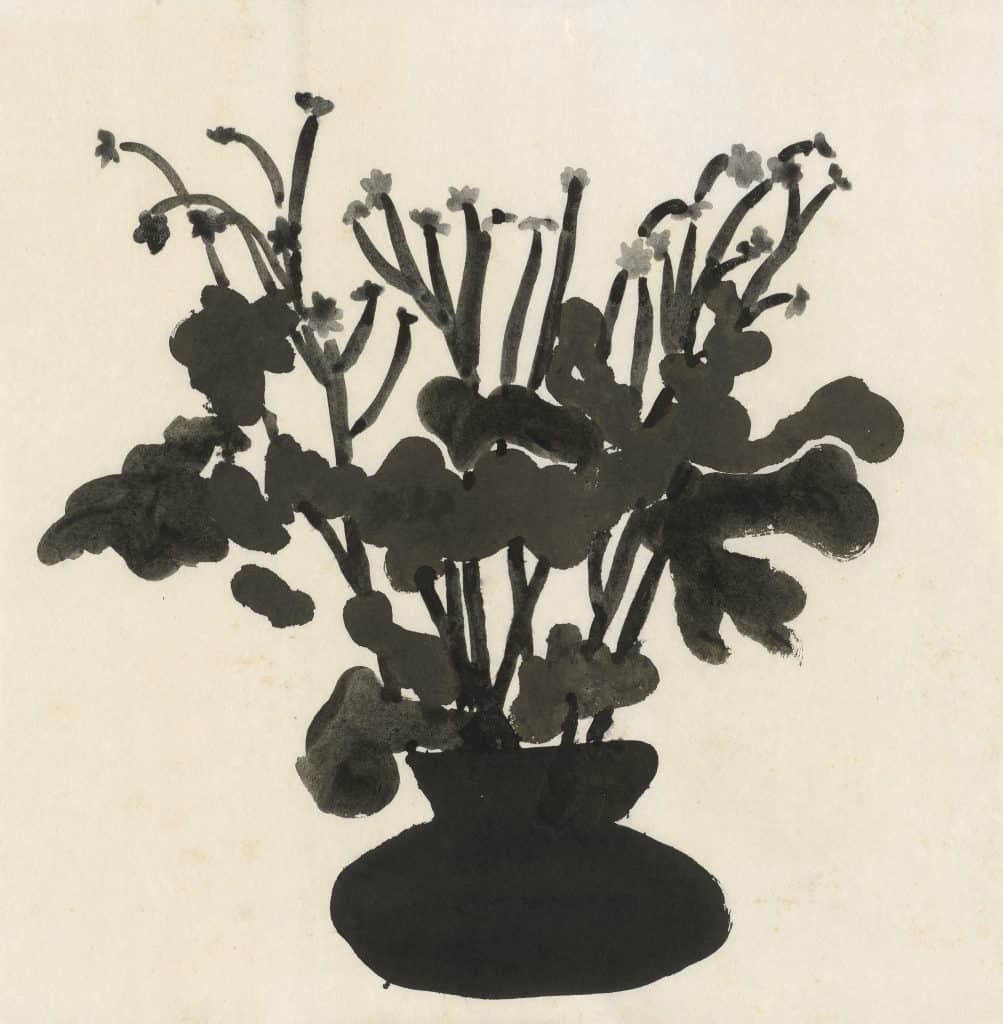
楊寓寧_洋甘菊_60X61cm_墨水紙本_2021
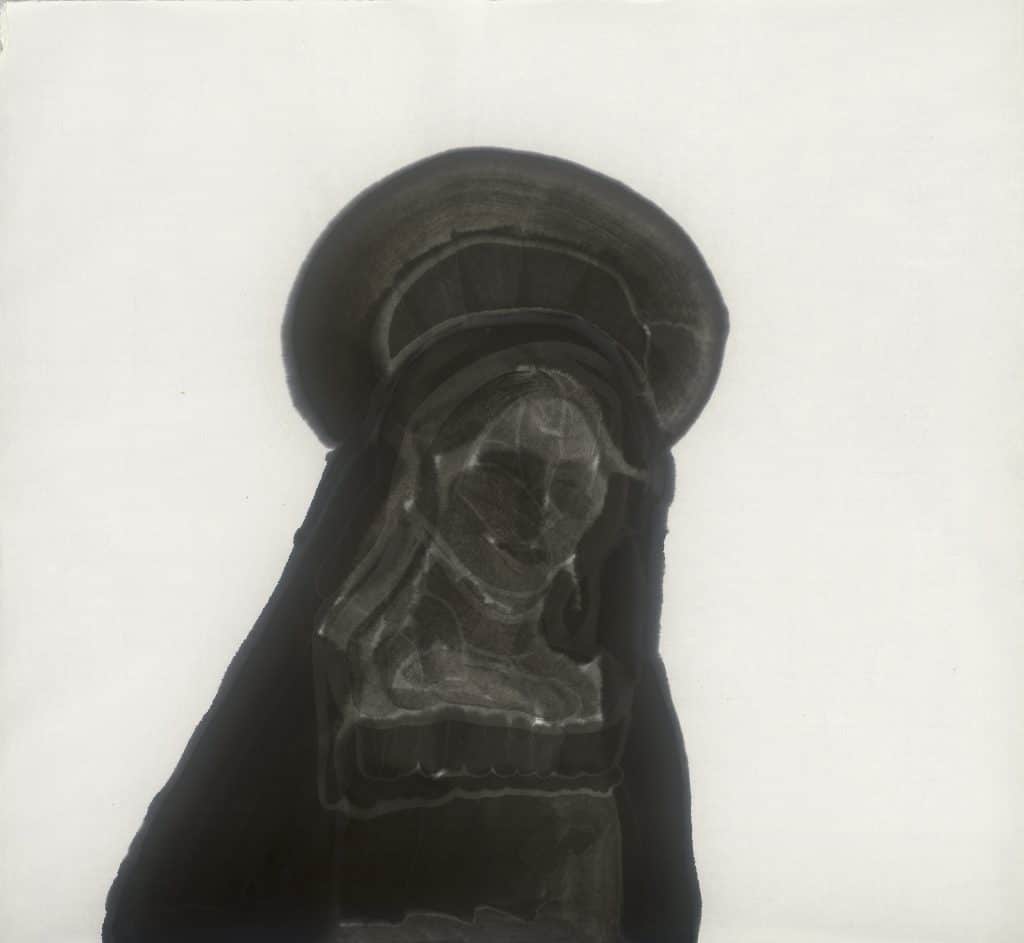
楊寓寧_,聖像_69X76cm_墨水紙本_2021
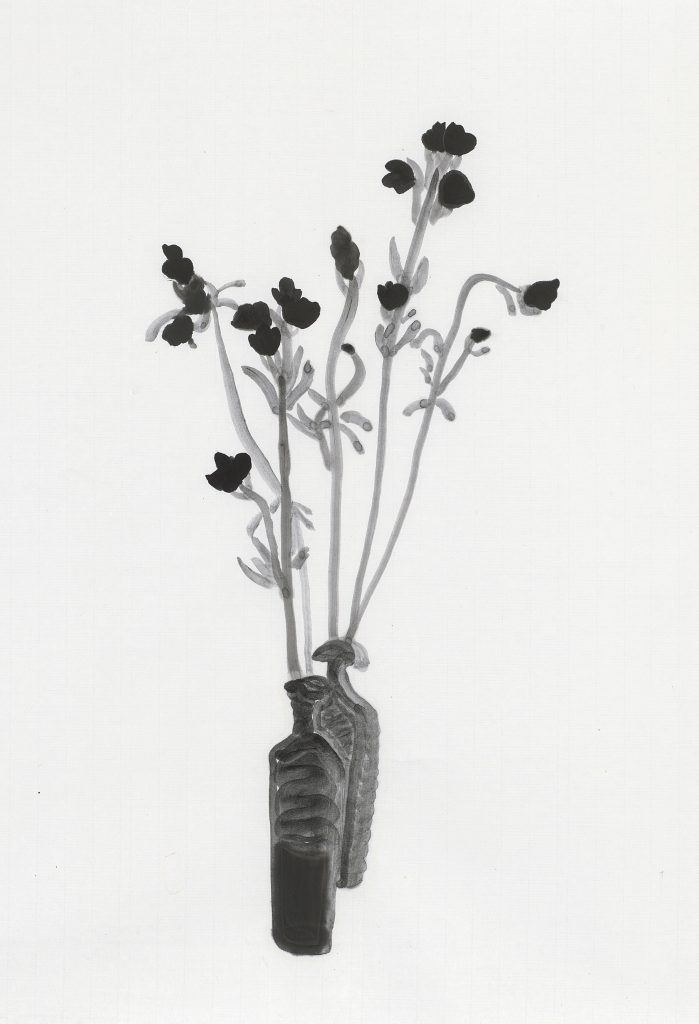
楊寓寧_瓶花_75X50cm_墨水紙本_2021
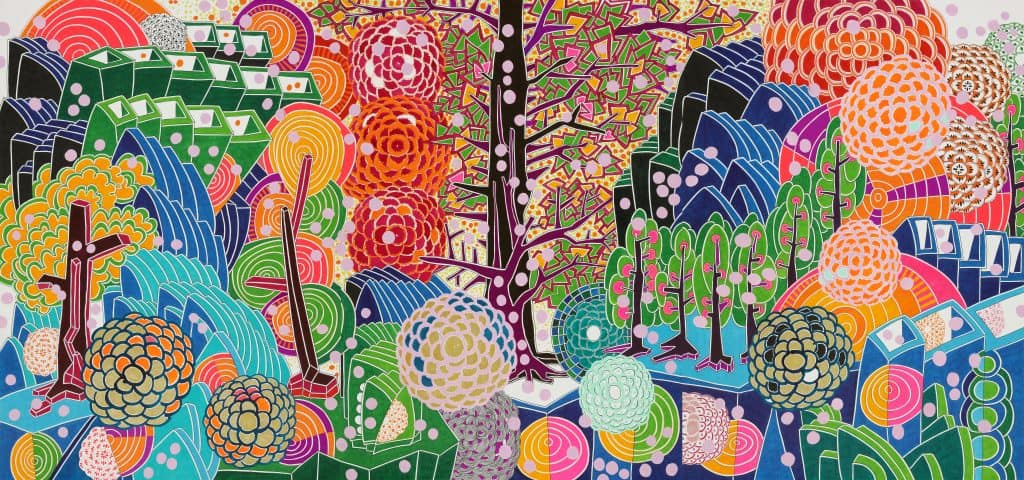
_嶢嶢-22_107x225cm_原子筆、墨水、紙_2021-2022
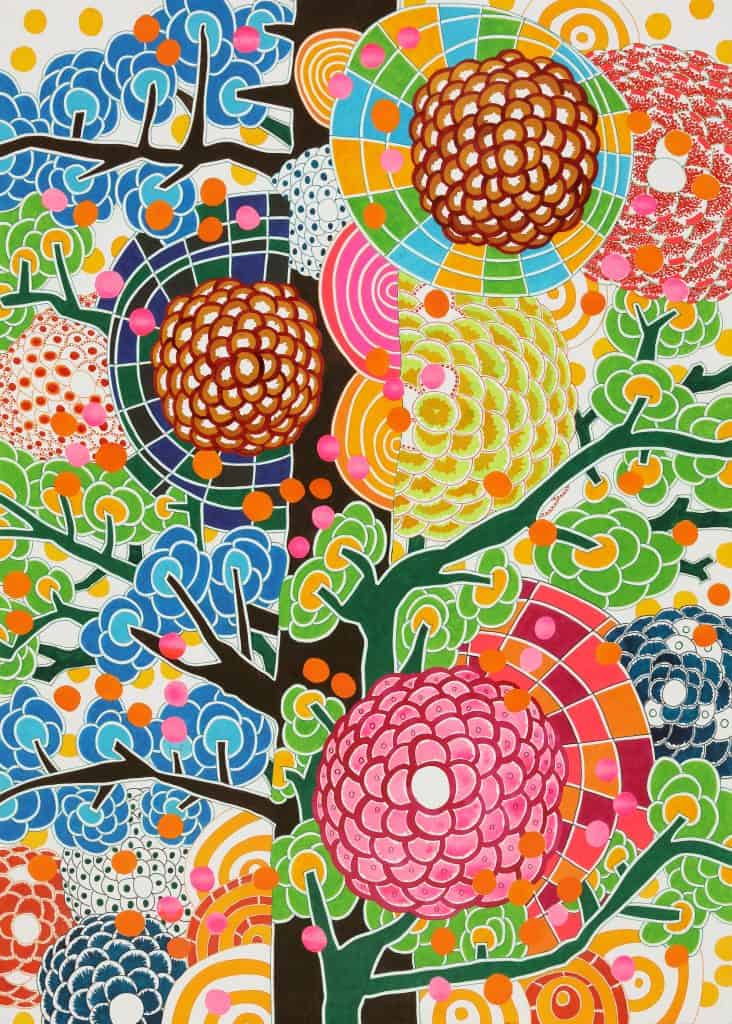
_樹語花9_107x75cm_原子筆、墨水、紙_2021-2022
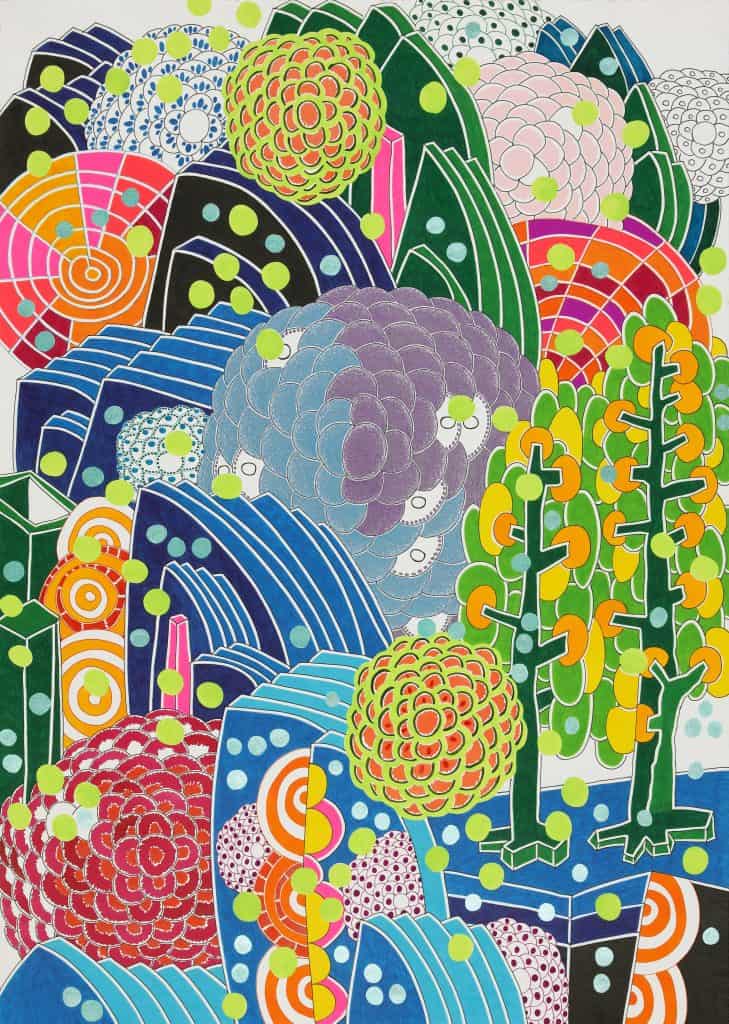
_嶢嶢-24_107x75cm_原子筆、墨水、紙_2021-2022
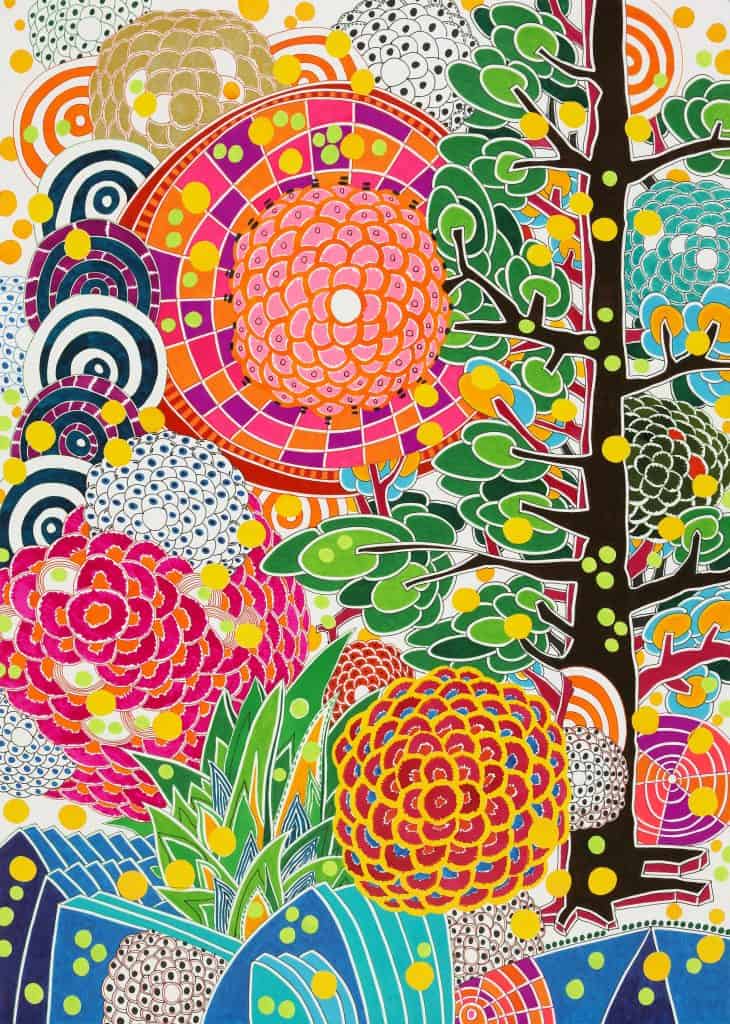
_嶢嶢-23_107x75cm_原子筆、墨水、紙_2021-2022
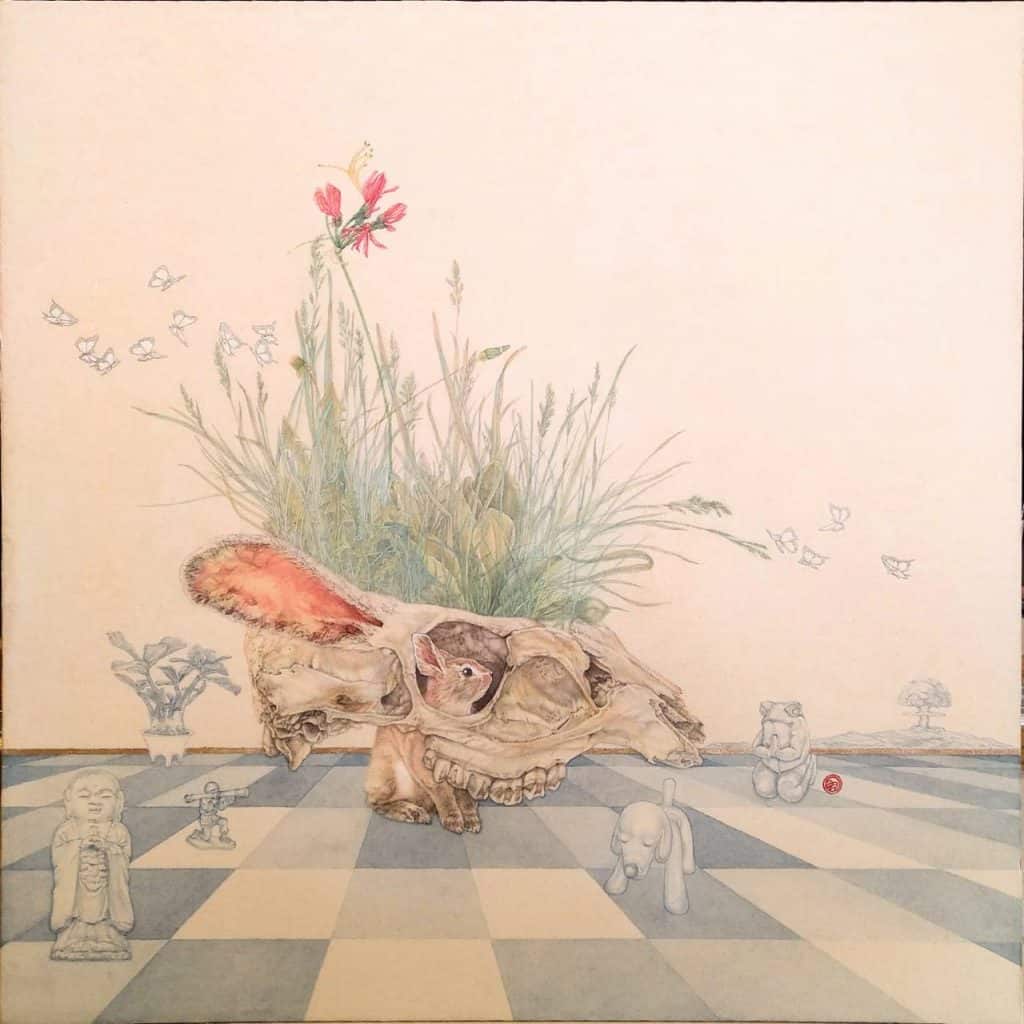
陶羽潔_夢境_50x50_複合媒材_2021
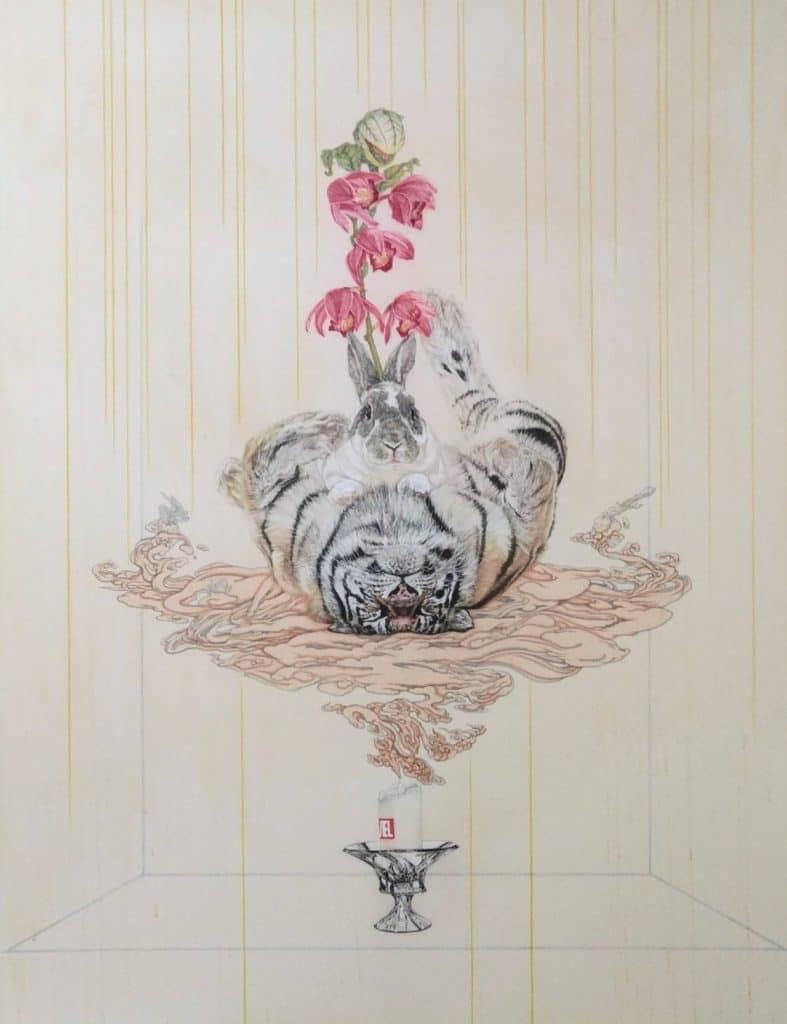
陶羽潔_無眠_98x74_複合媒材_2021
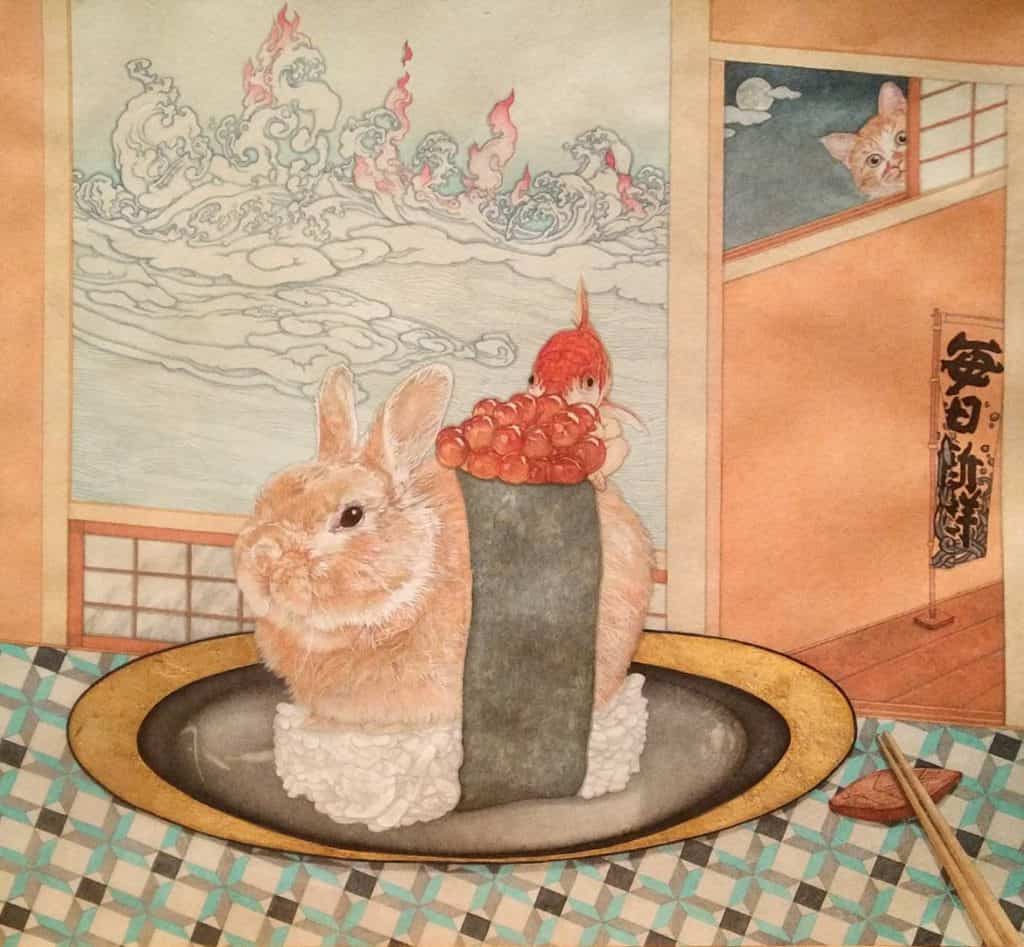
_觀_37x40.5_複合媒材_2021
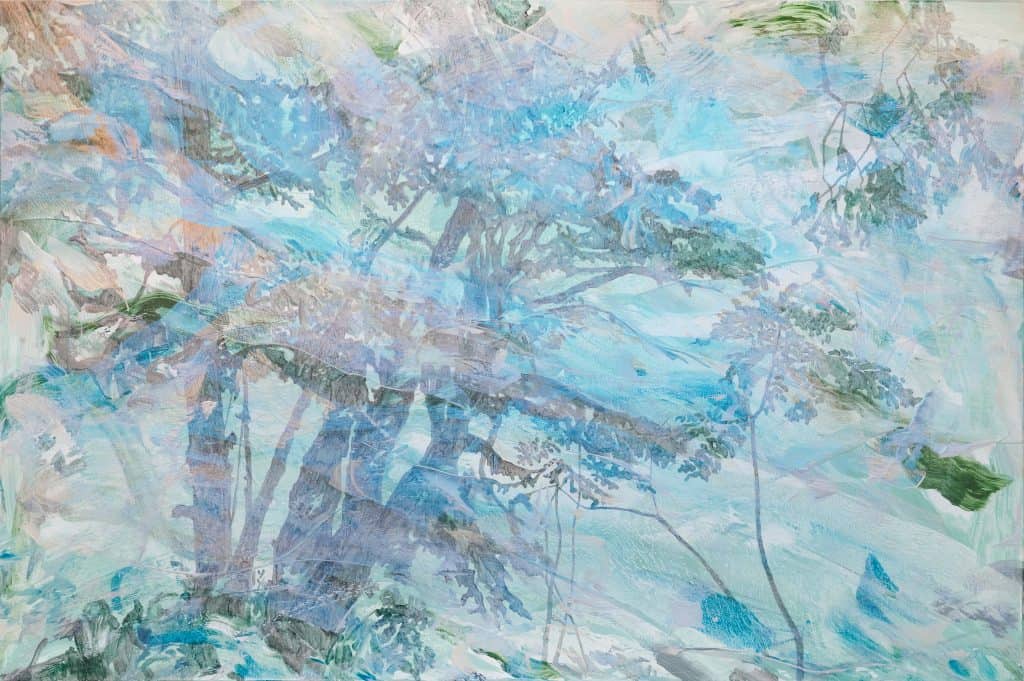
_森林32_壓克力顏料、畫布_100x150cm_2022
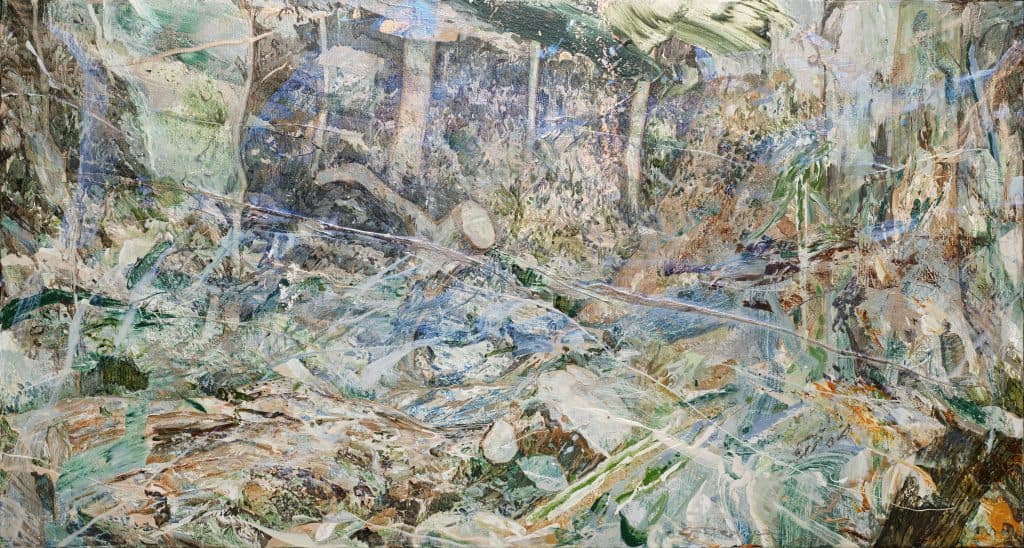
許聖泓_某日的記憶_壓克力顏料、畫布_80x150cm_2019
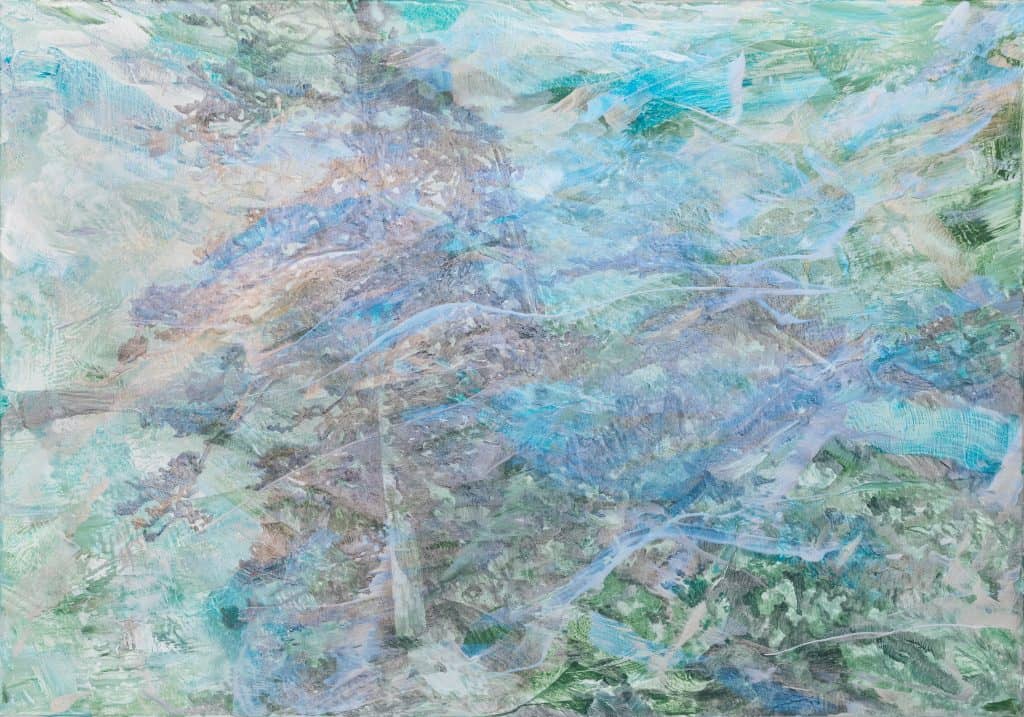
許聖泓_向陽_壓克力顏料、畫布_70x100cm_2021
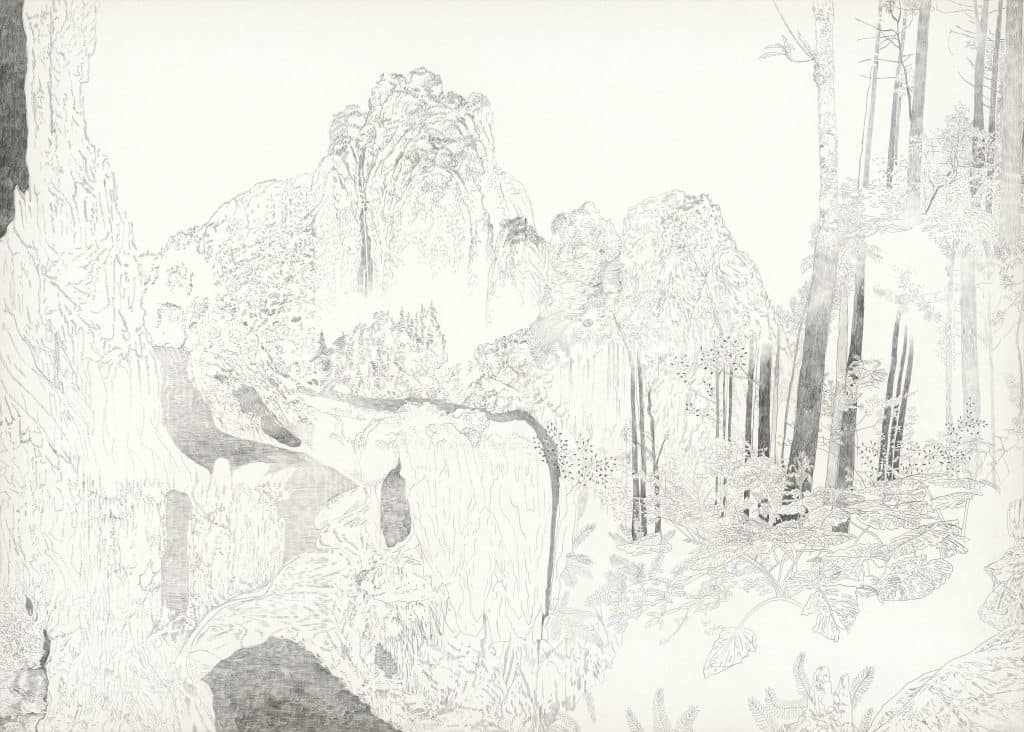
高雅婷_複景素描_黑_複寫紙、法國水彩紙_78.5x109cm_2020.jpg
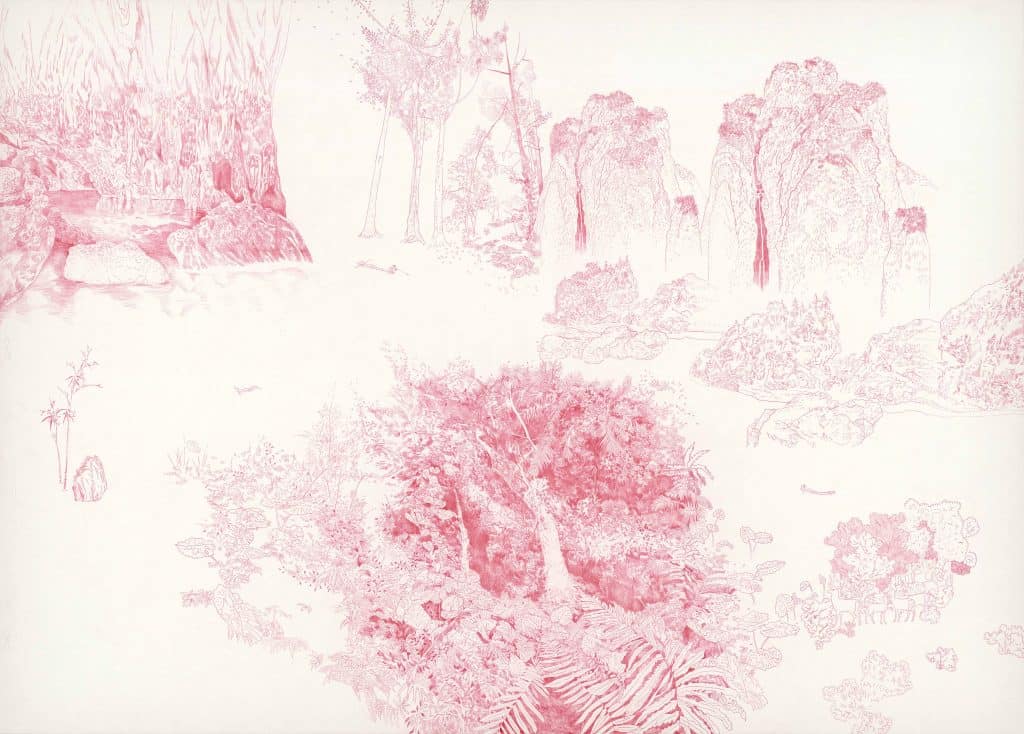
高雅婷_複景素描_紅_複寫紙、法國水彩紙_78.5x109cm_2020
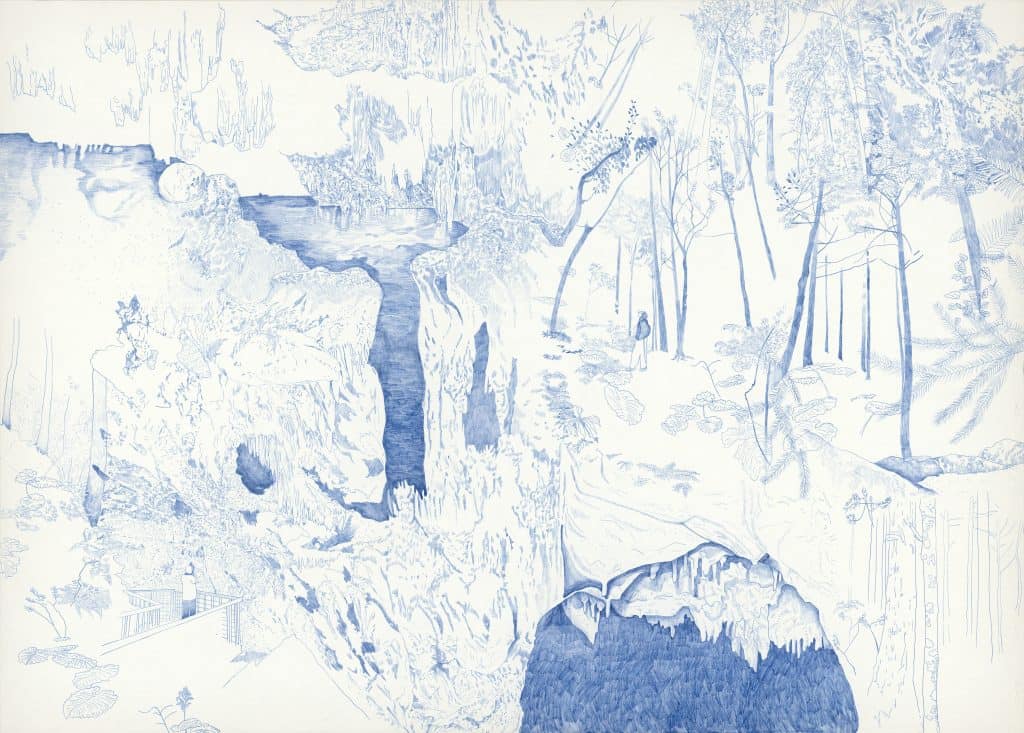
高雅婷_複景素描_藍_複寫紙、法國水彩紙_78.5x109cm_2020.jpg
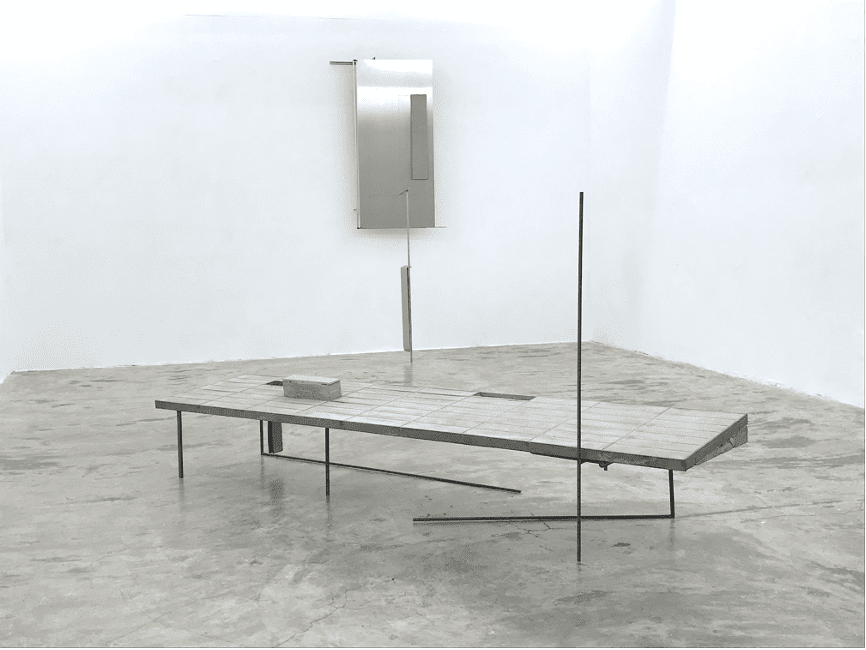
_9x7_208-x-52-x-100cm_水泥、鐵、磁磚、聚氨酯_2020
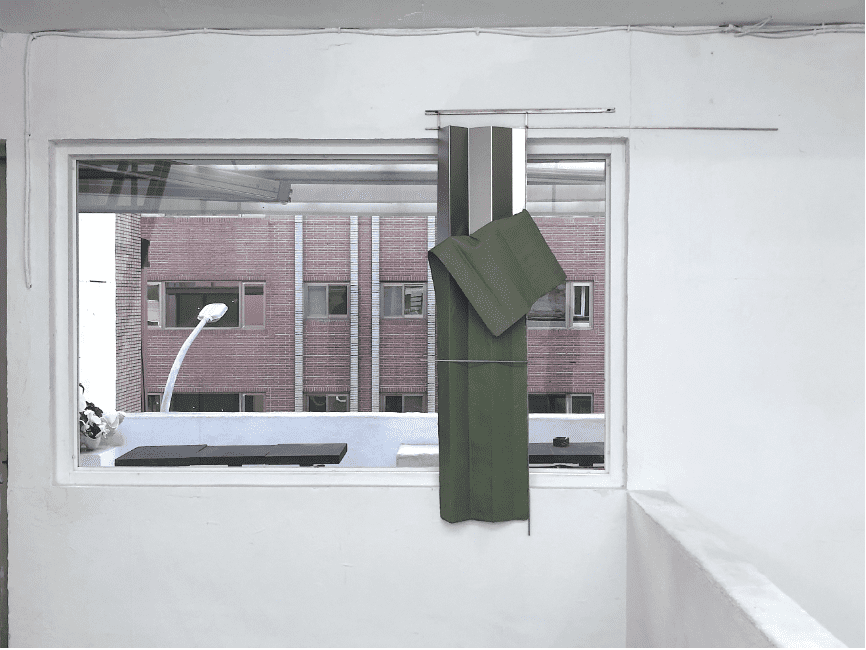
_折角_不銹鋼、聚氨酯_160x130x10cm_2020
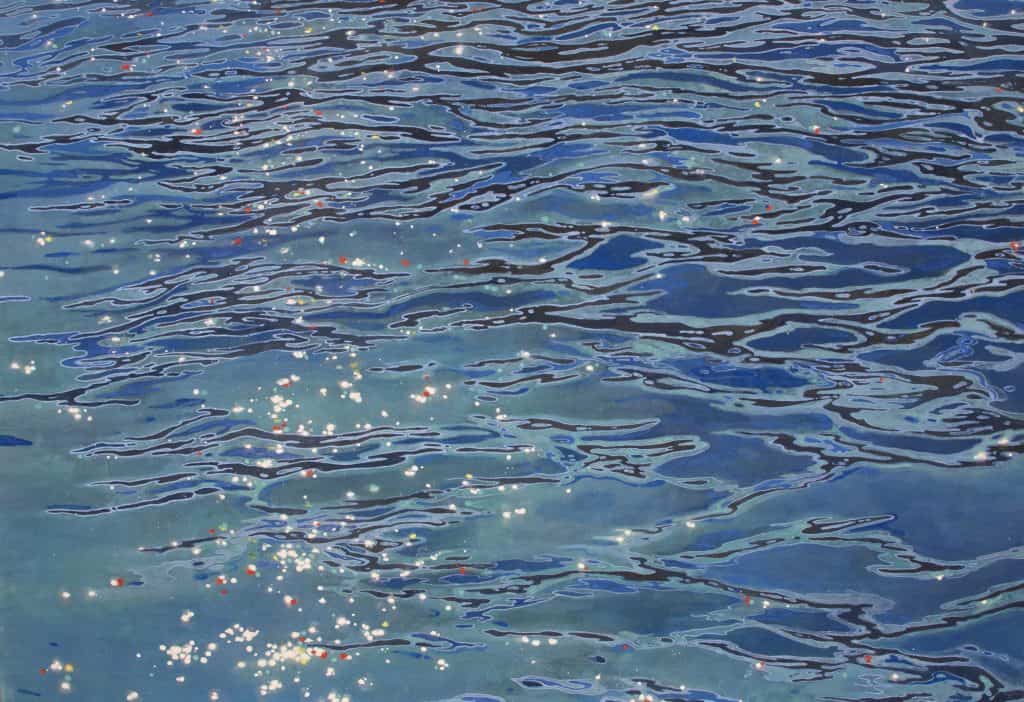
_粼粼_116.5x80cm_岩繪具、高知麻紙_2021
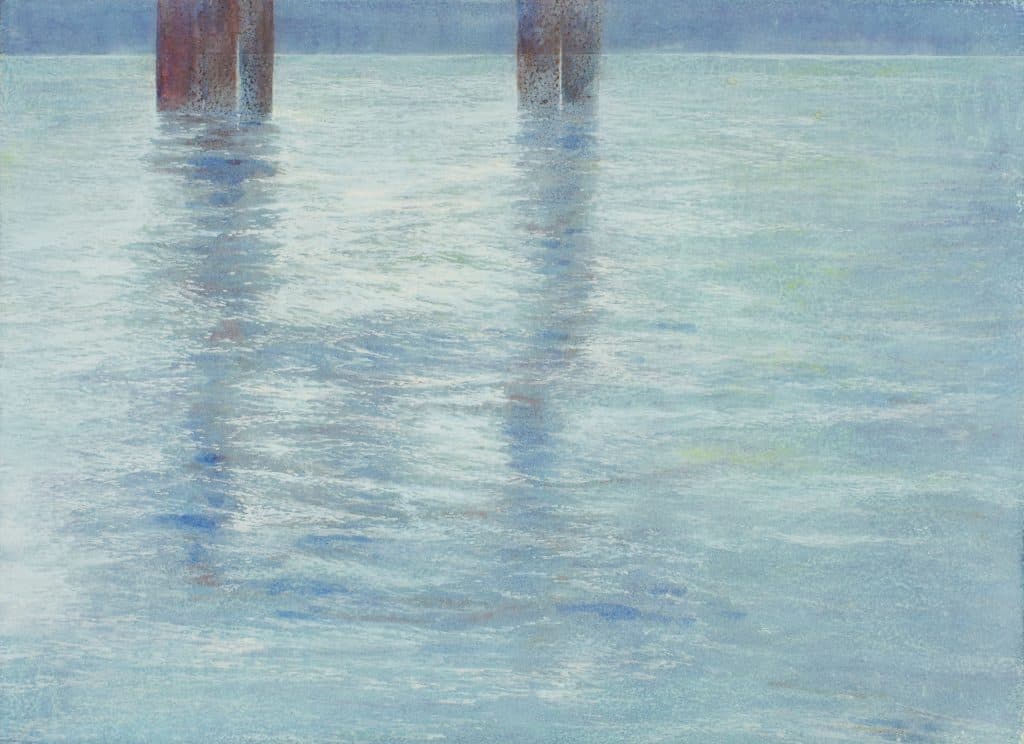
Oracle F4. 2021
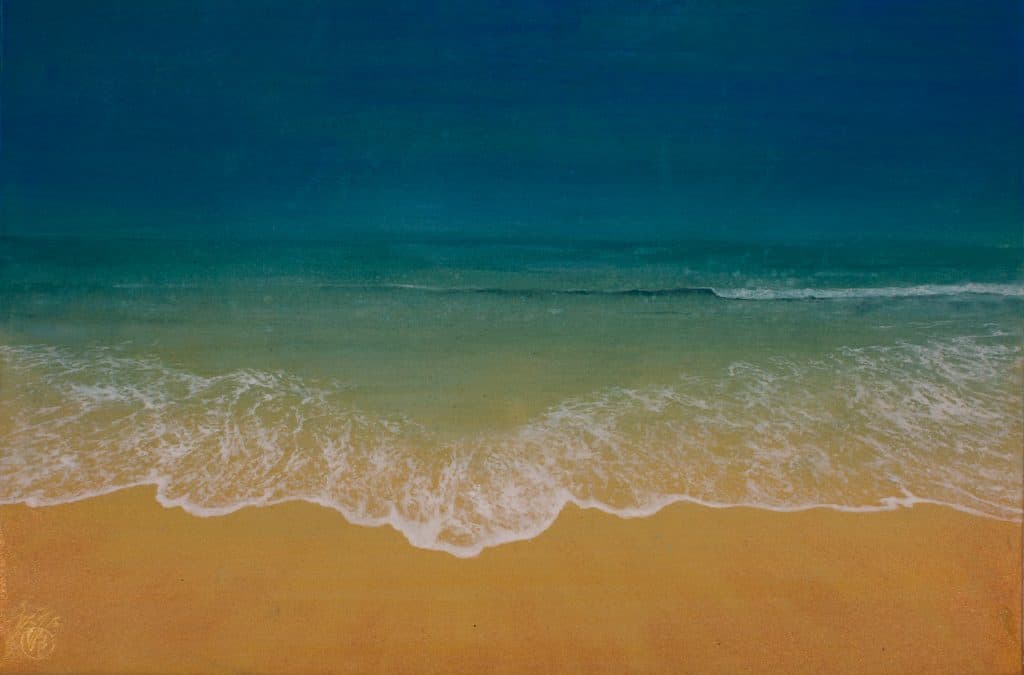
彼岸。此岸 coast to coast
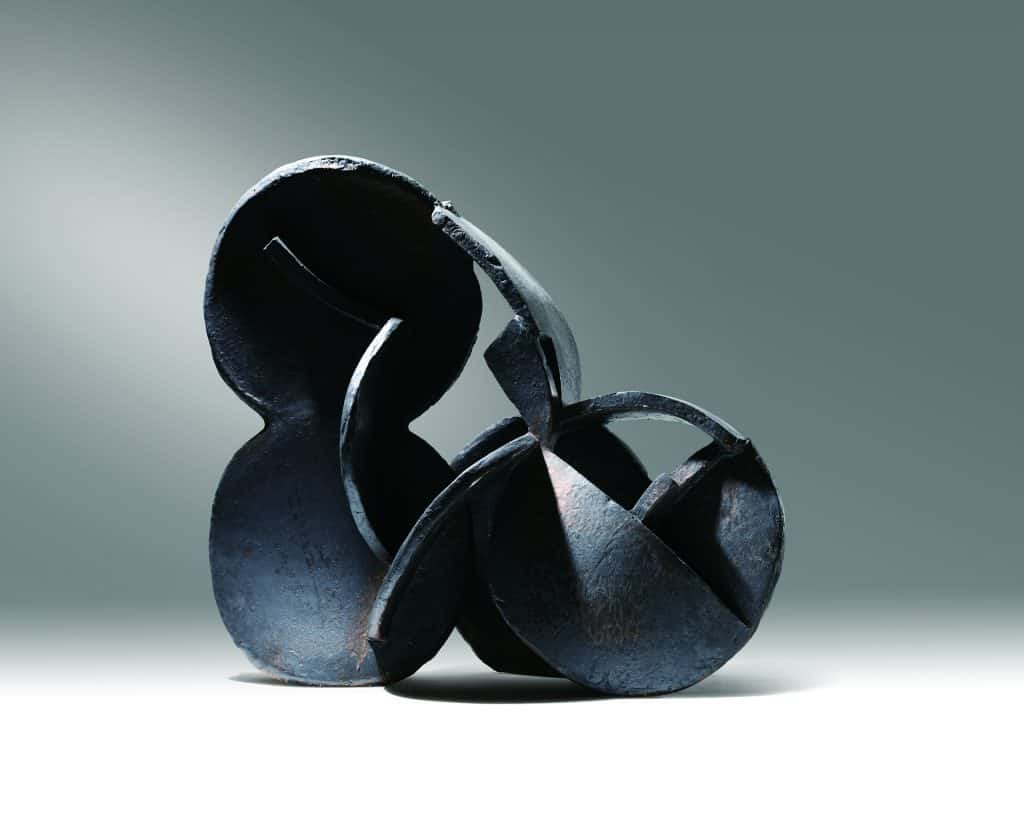
_時之煉金術-005_陶_H97x88x43cm_2020
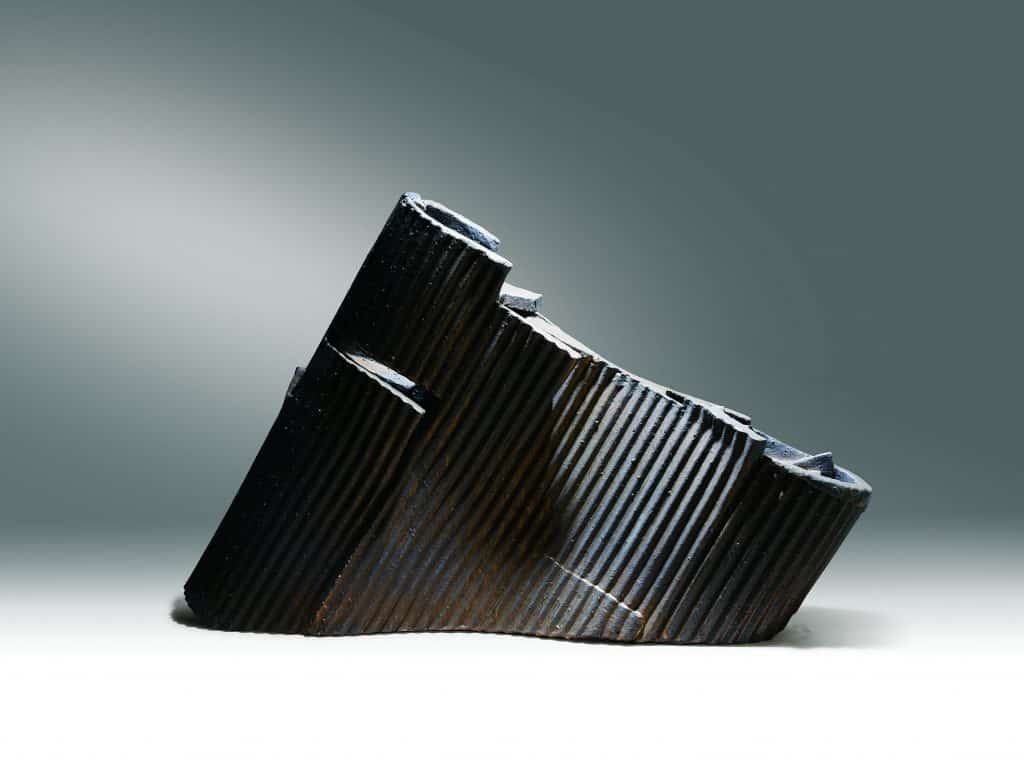
_如光漫漫018_陶_H88x145x35cm_2021
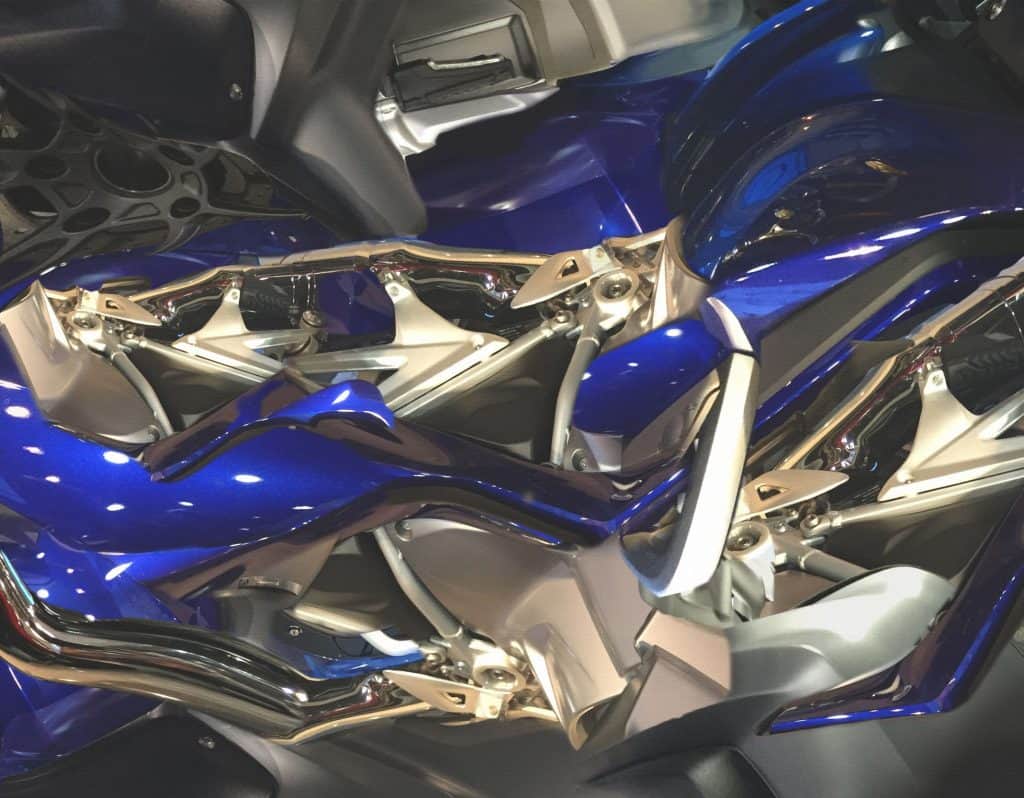
_surface≒_91.4×114.3cm_油畫顏料、畫布_2016
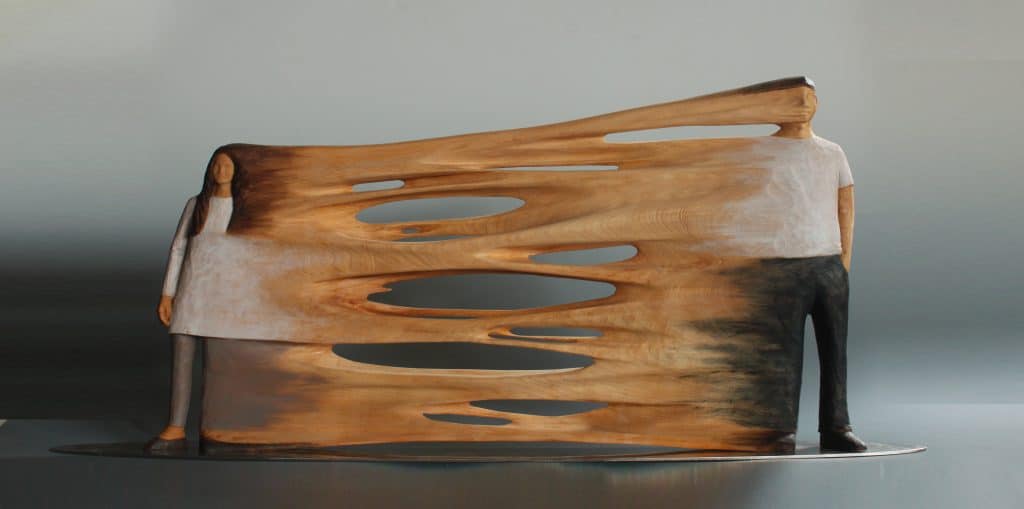
林禹彤_黏-10_檜木_6x65x35cm_2021
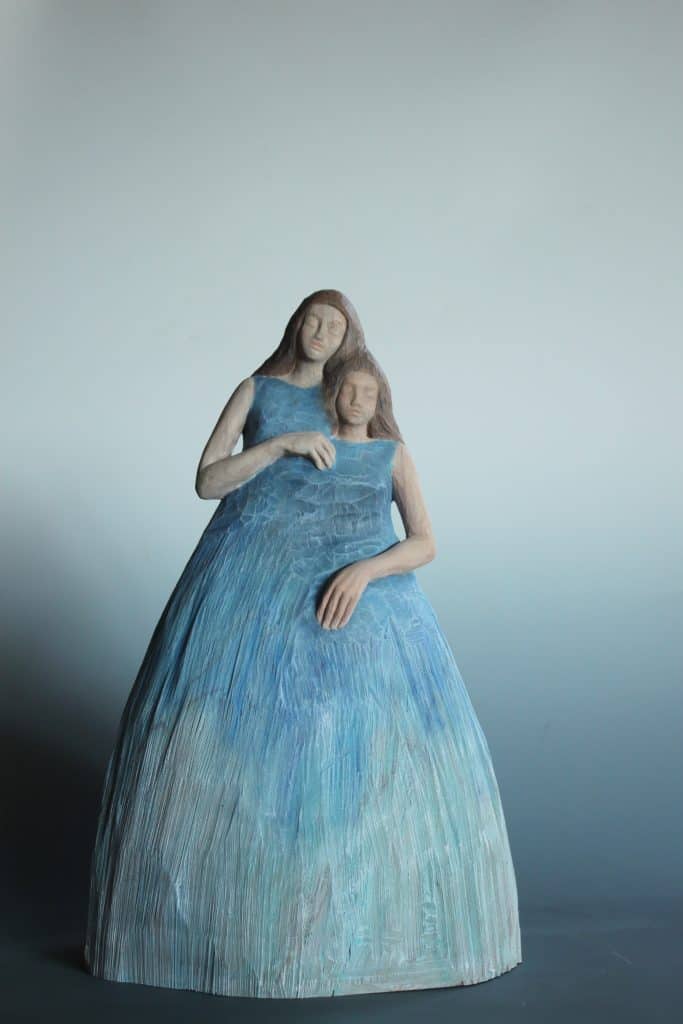
林禹彤_依-3_樟木_31x21x48cm_2021
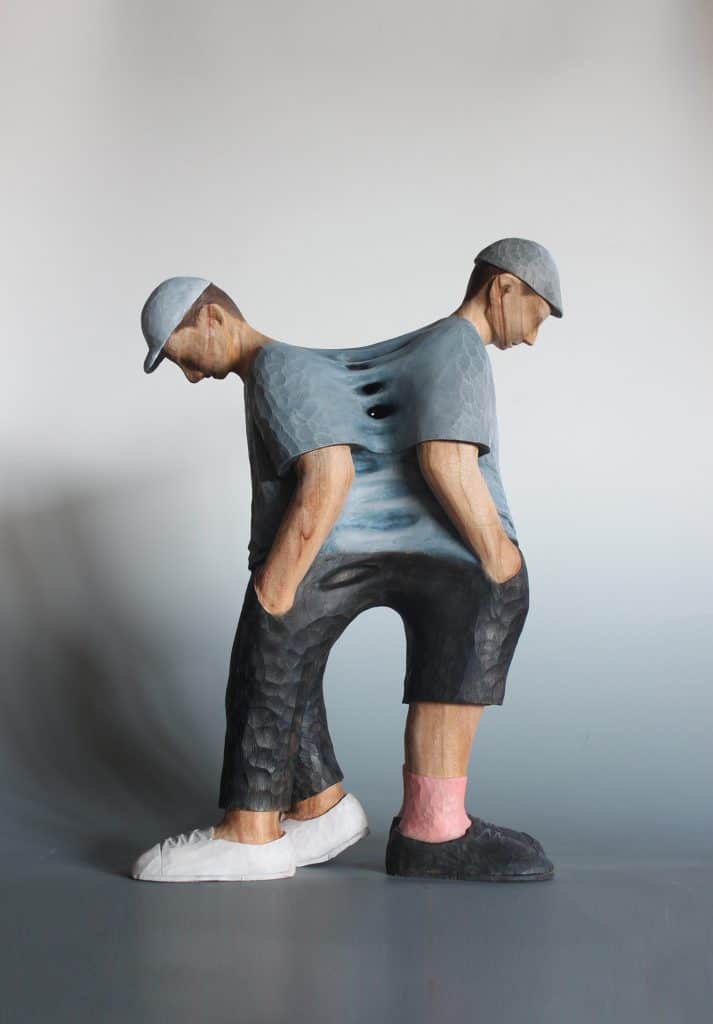
林禹彤_依-4_樟木_21.5×36.5×53.5cm_2022
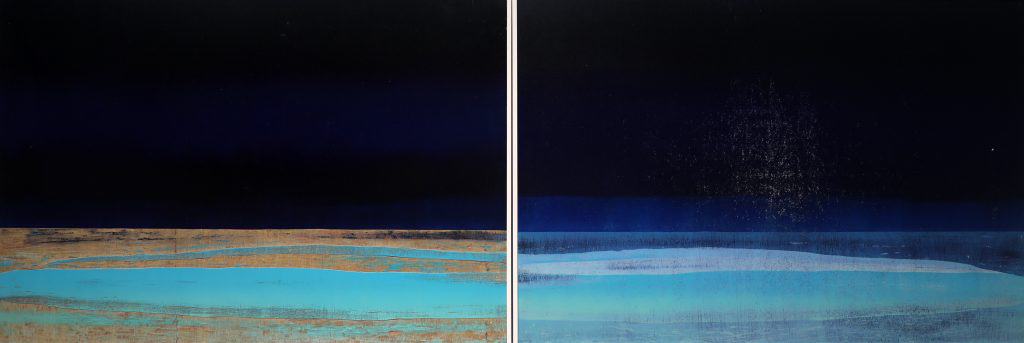
李屏宜_Breathe-Wave-海_三夾板、油墨、Fabriano版畫紙_60x180cm_2020

李屏宜_Breathe-Wave-山_三夾板、油墨、Fabriano版畫紙_60x180cm_2020
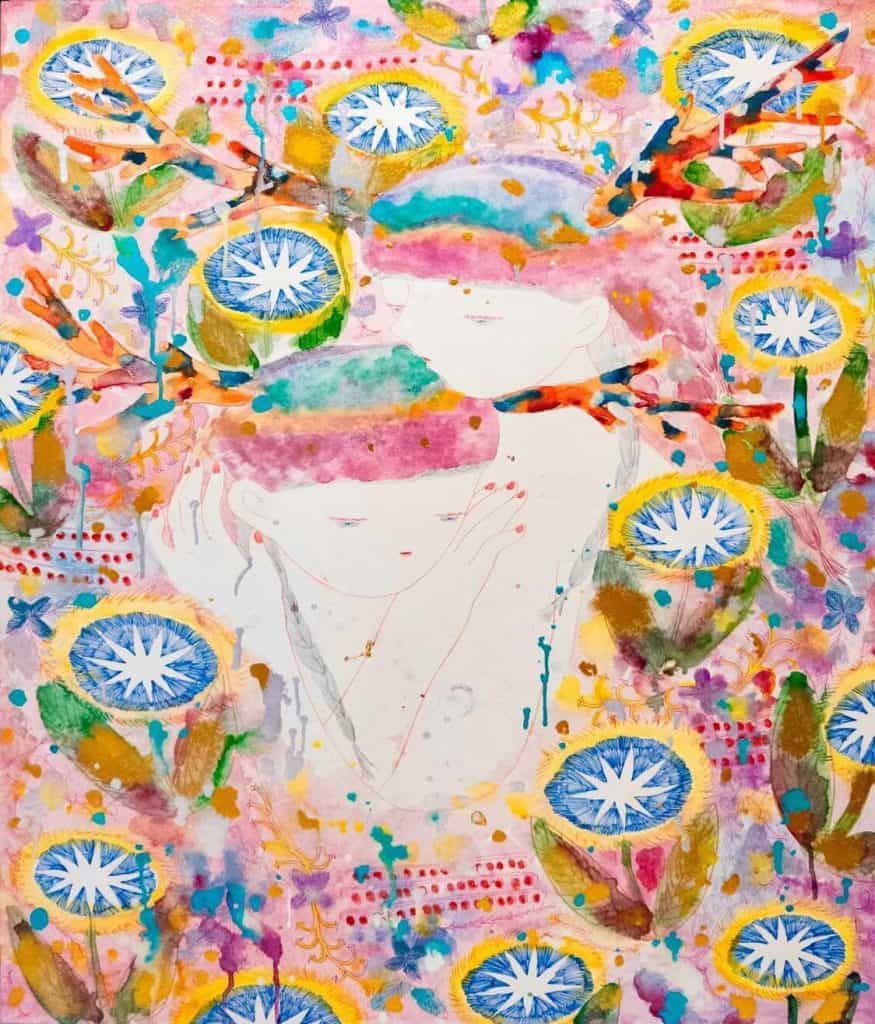
_昔日_91x72.7cm_和紙、礦物顏料、水彩、鉛筆、色鉛筆_2021
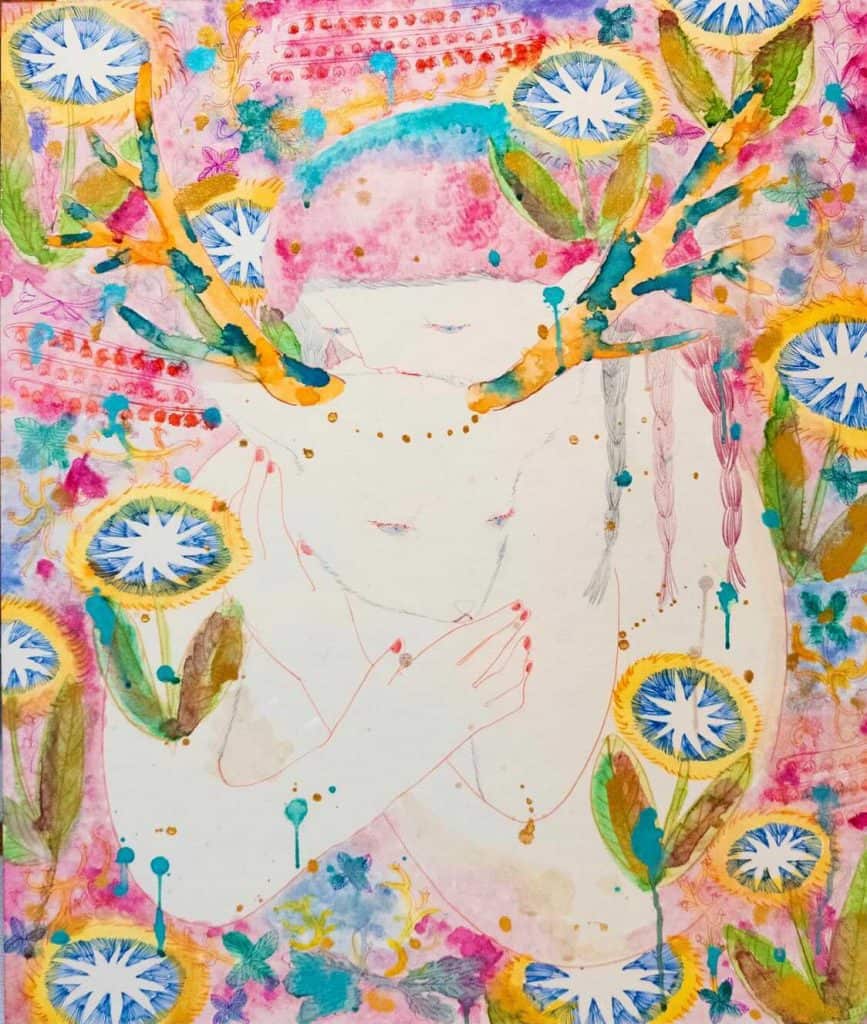
山下宏子_昔日_72.2×60.6cm_和紙、礦物顏料、水彩、鉛筆、色鉛筆_2021.jpg
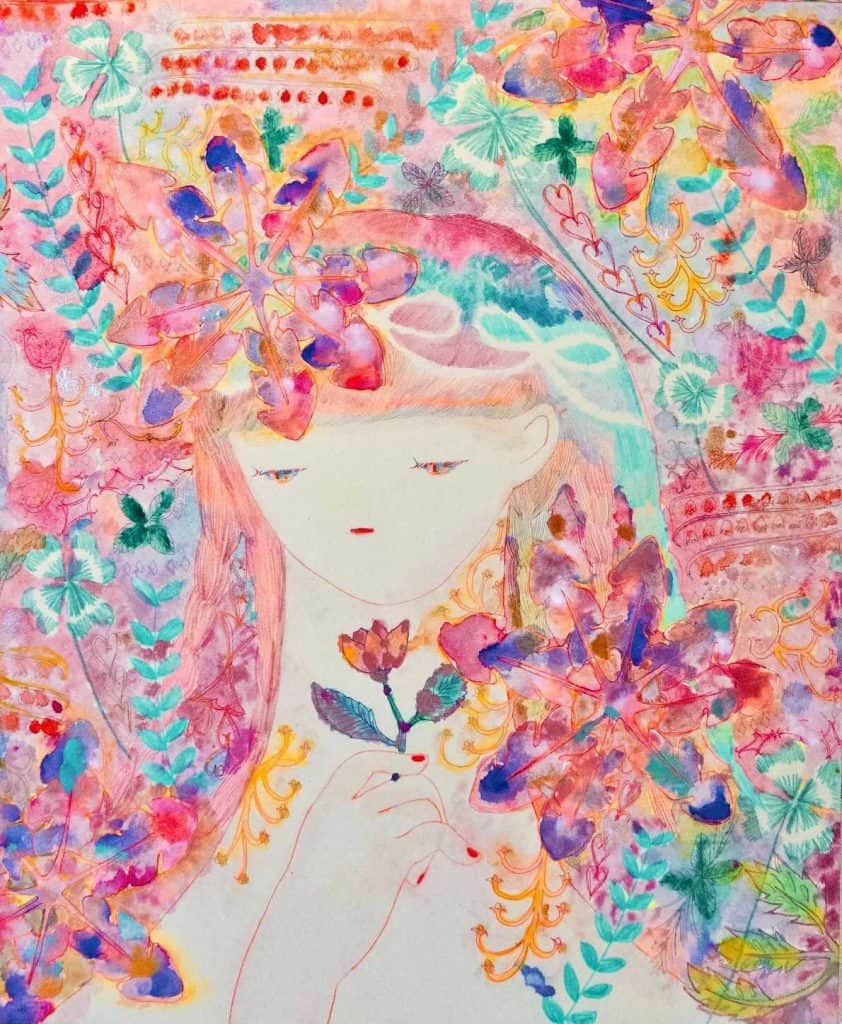
山下宏子_昔日_53x45.5cm_和紙、礦物顏料、水彩、鉛筆、色鉛筆_2021.jpg
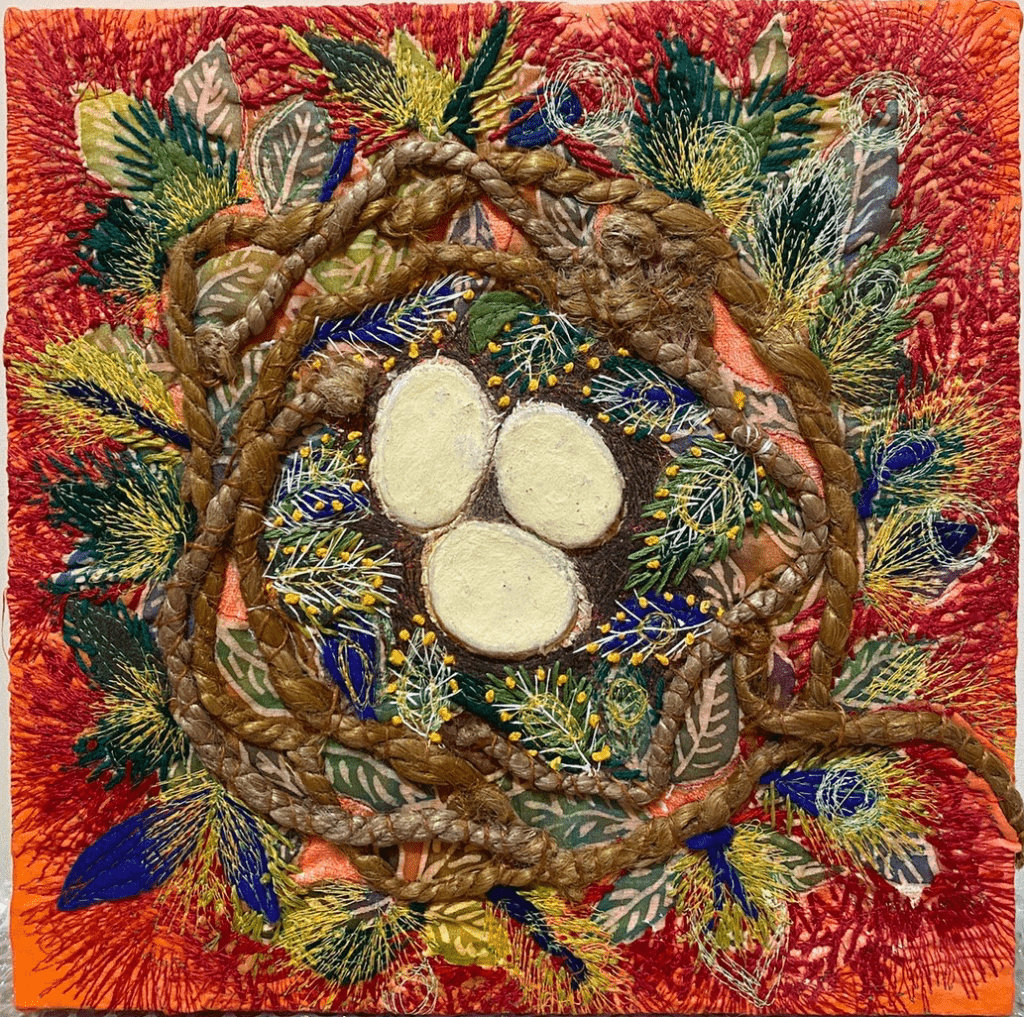
_Creation_棉、亞麻布、羊毛、矽藻土、黏土_30x30cm_2020-1
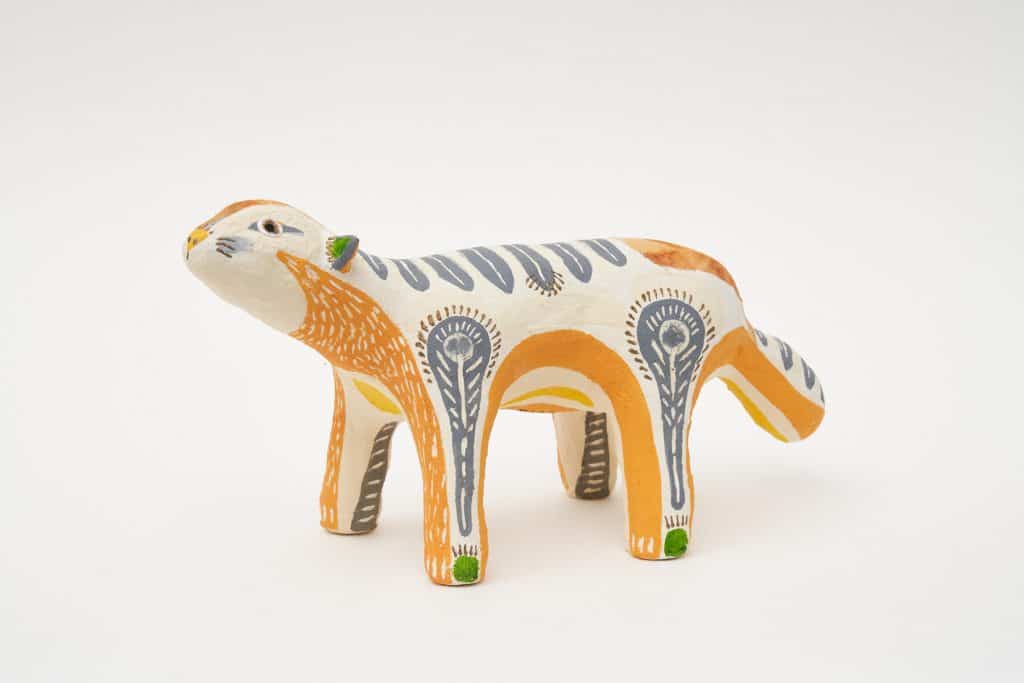
小林萬里子_Tanuinu_黏土、土壤、矽藻土、棉、壓克力顏料_9x19.5x19cm_2021.jpg(2)
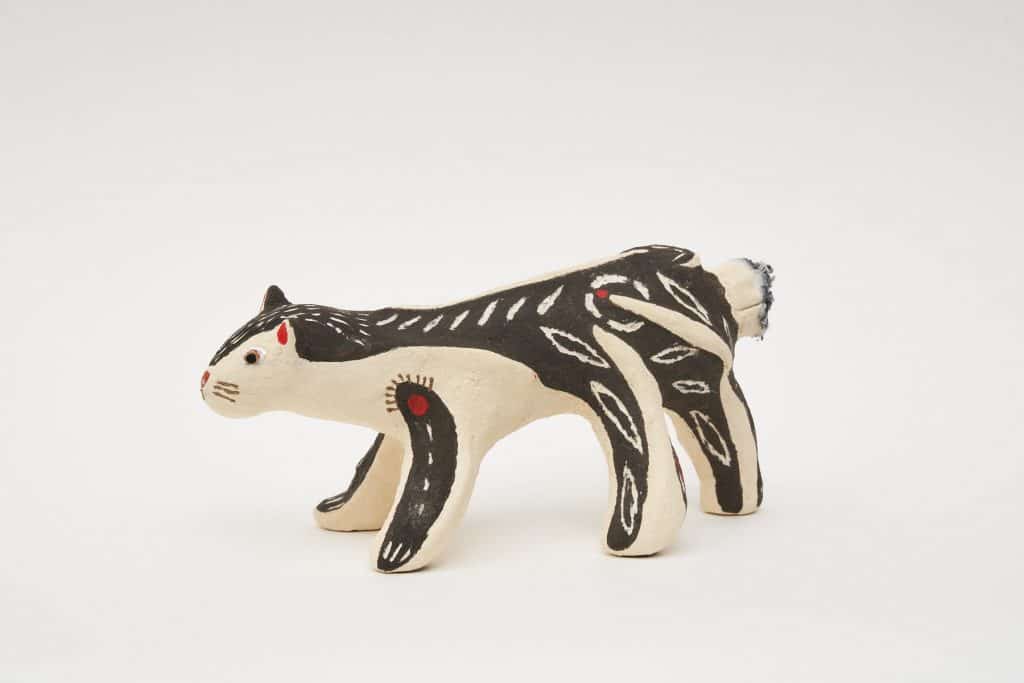
_Kurobe_黏土、土壤、矽藻土、棉、壓克力顏料_9x19.5x19cm_2021-1
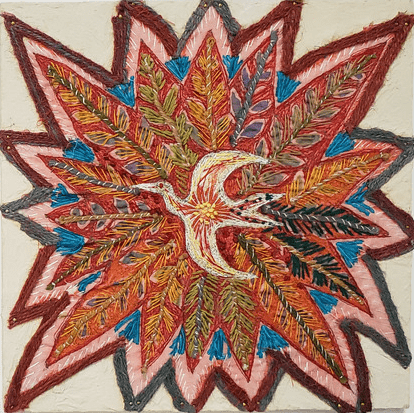
_imagination_棉、亞麻布、羊毛、矽藻土、黏土_30x30cm_2020-1
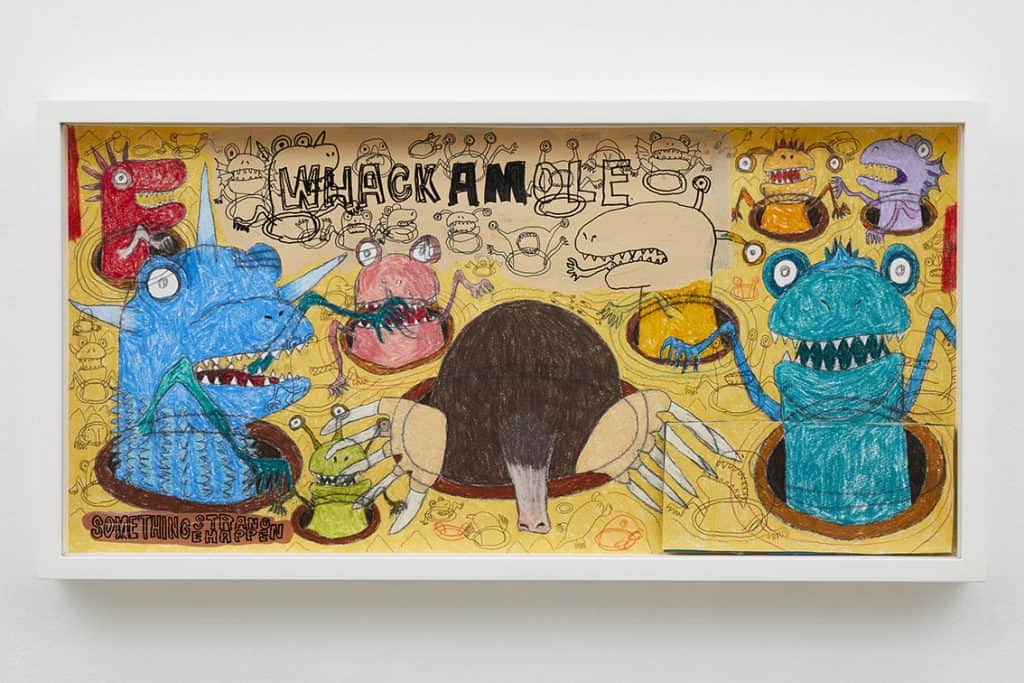
三宅信太郎_HWACKAMOLE_25.6×50.6cm_鉛筆、色鉛筆、壓克力顏料、麥克筆、紙_2020
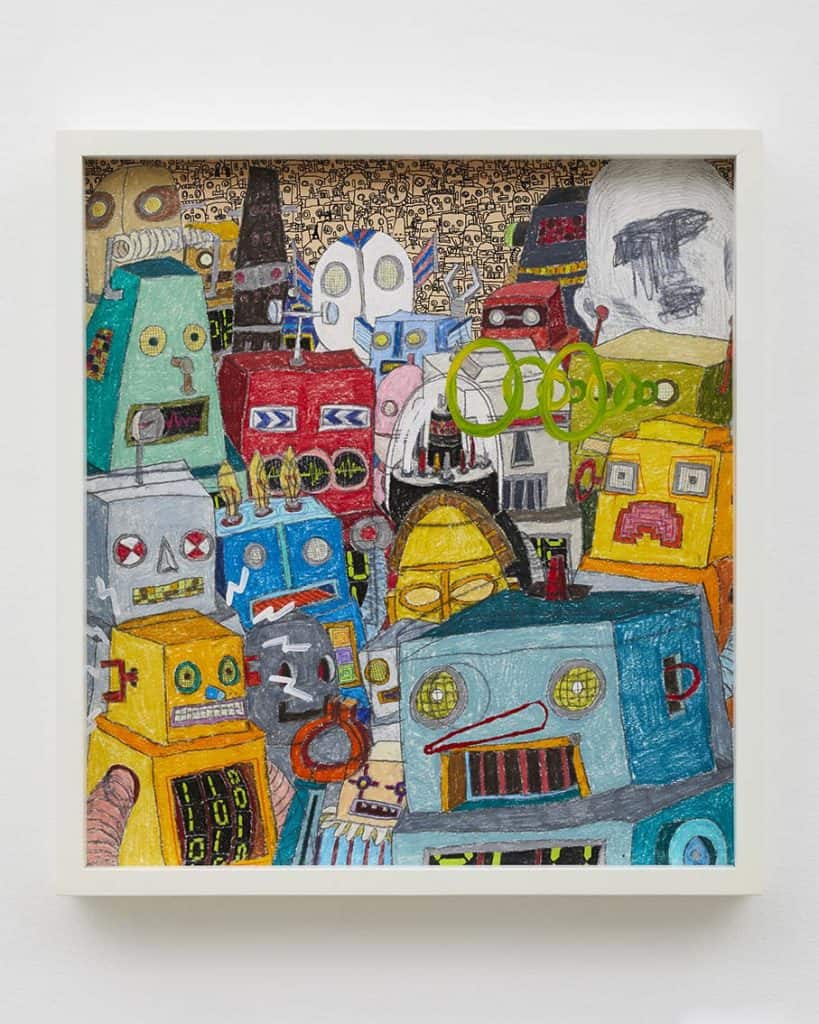
ROBOT_33.1-x-31cm-鉛筆、色鉛筆、丙烯酸纖維、壓克力顏料、麥克筆_2020-1
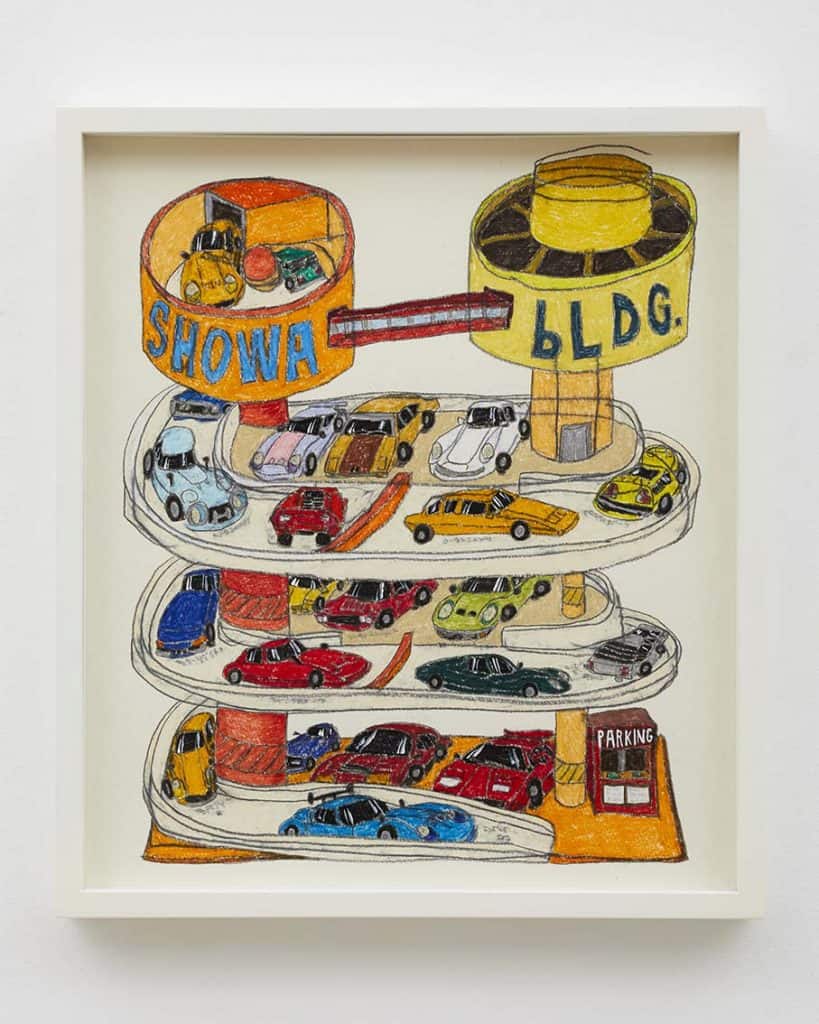
三宅信太郎_PARKING_36.1×31.5cm_鉛筆、色鉛筆、壓克力顏料、紙_2020.jpg
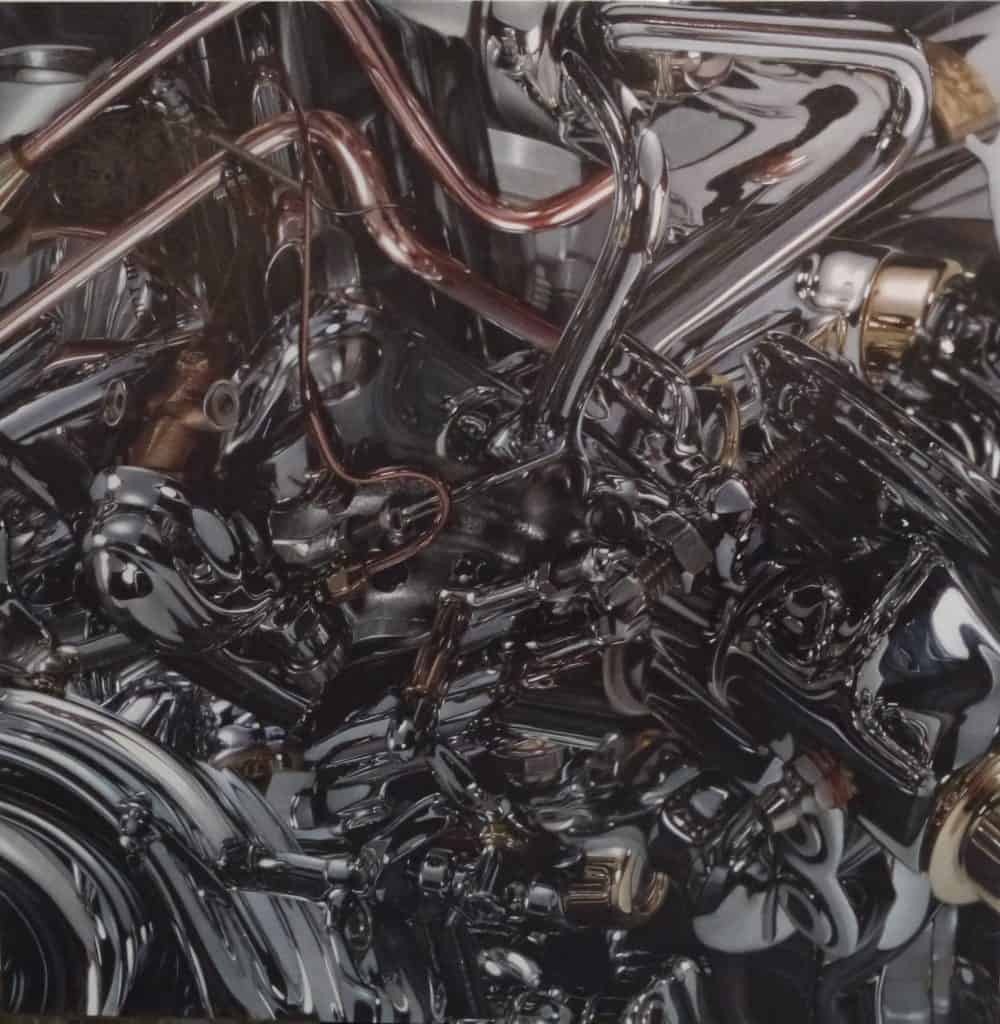
_Melting-poin_135×135cm_油畫顏料、畫布_2022
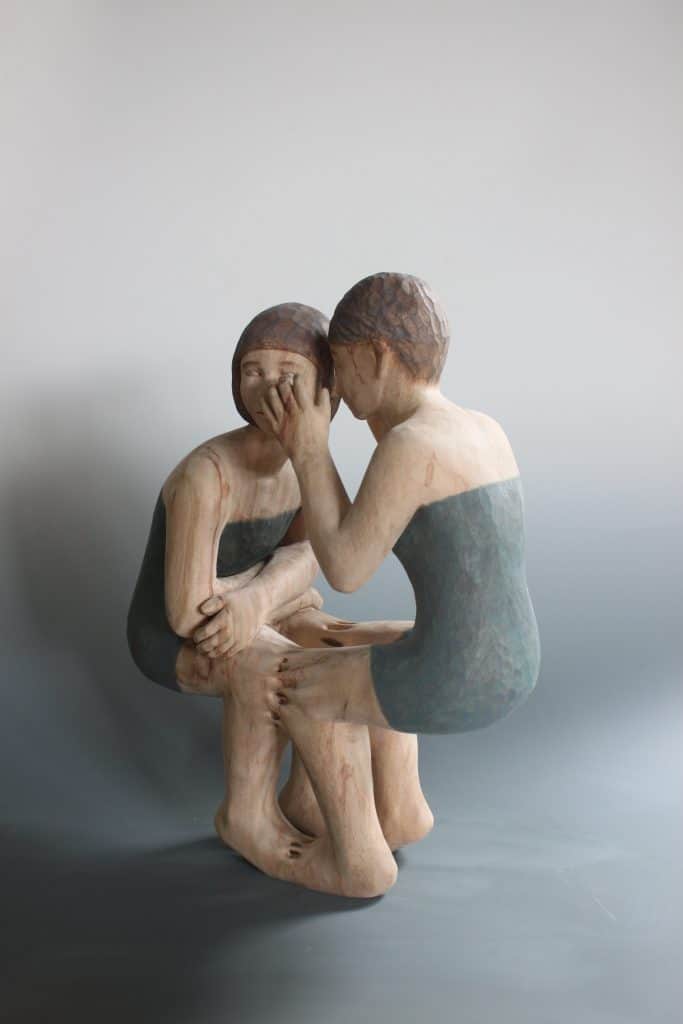
林禹彤_Whisper-1_樟木_20x39x51cm_2020
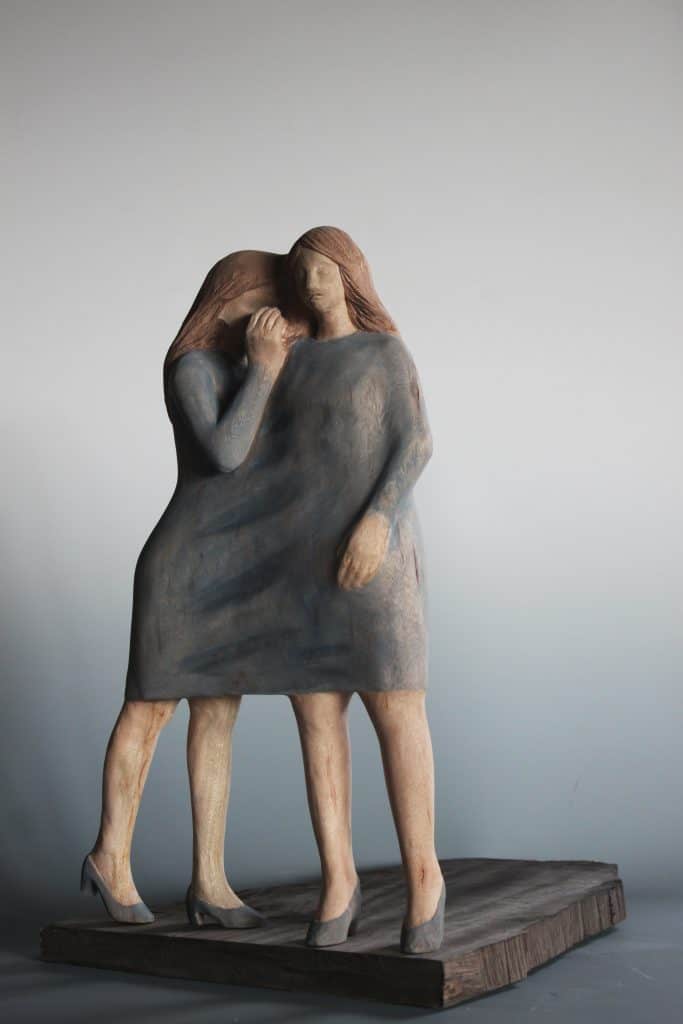
林禹彤_Whisper-2_樟木_32.5×42.5x50cm_2020
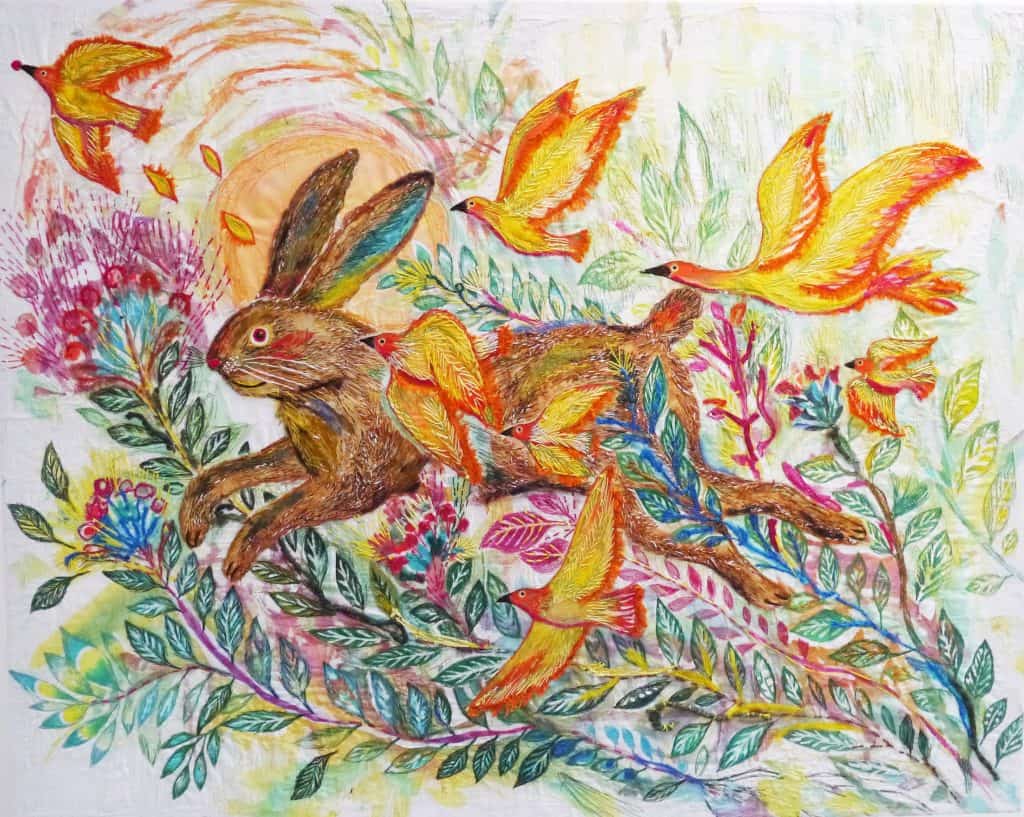
_The-sun-rises-the-light-breaks_棉_120x150cm_2021-1
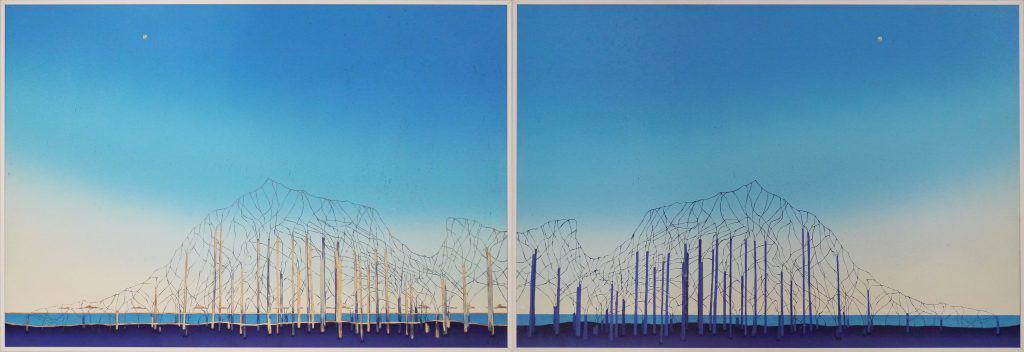
李屏宜_那一年。南方以南-海_三夾板、油墨、Fabriano版畫紙_60x180cm_2022.jpg
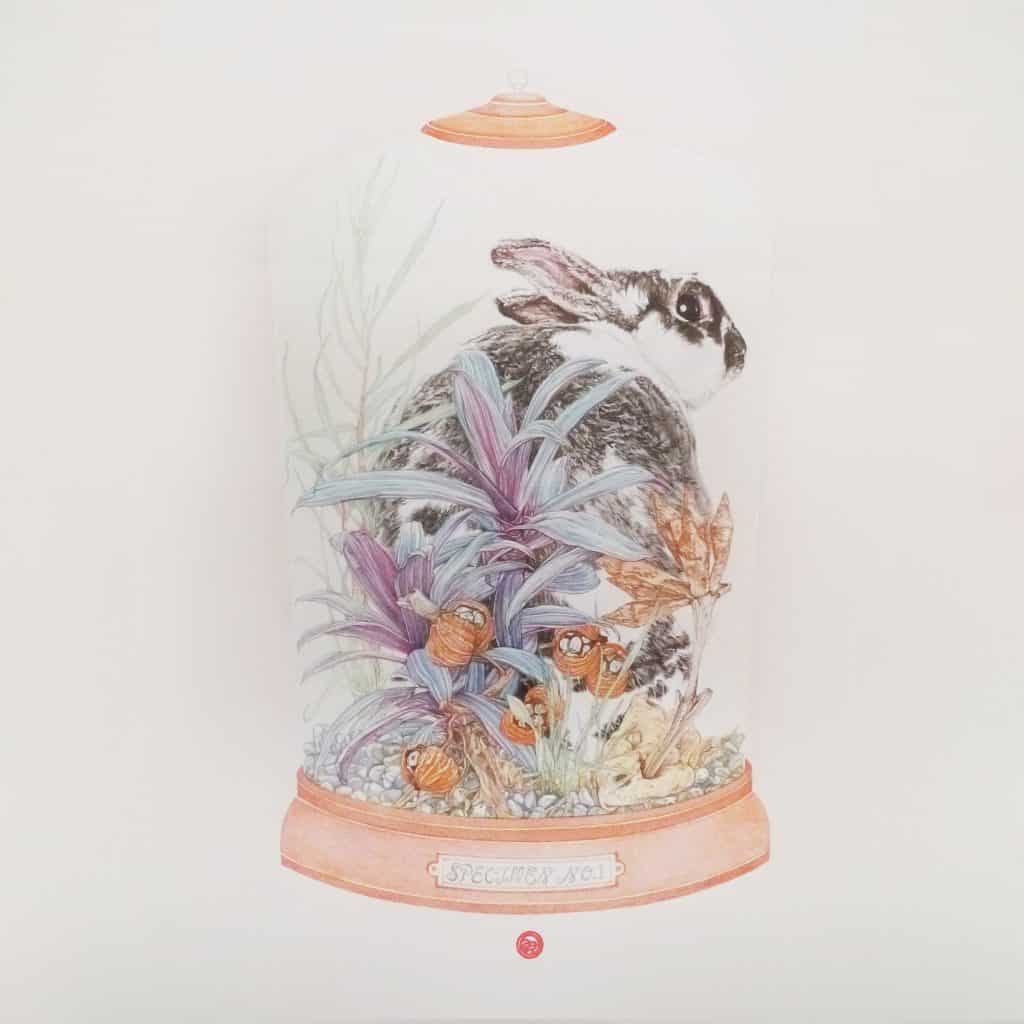
_ㄧ號樣本_39x27.5_複合媒材_2021
開幕|2022.02.19 (六)pm 3:00 – pm 6:00
展期|2022.02.19~2022.04.02
地點|台南市中西區忠義路二段186號

